




Uncovering why so many athletes step away from the different sports they love — page 26




would like to thank our sponsors...
Alex Comsa
Anthony Custodi
Carol Burnett
Cheung Family
Filiz Dogan
Tamlin Connel Kinnan
Frick Family
Hsu Family
Joachim Family
Liu Family
Carol Mueller
Porat Family
Schoebel Family
Segev Family
Julie Wissink

Our mission is to create and maintain a magazine that can be a preeminent voice for Paly athletics, celebrating our community through powerful storytelling. We strive to foster a positive culture by giving a platform to diverse voices and challenging readers to think critically.
Editors-in-Chief
Arjun Bharat, Tyler Cheung, Scarlett Frick, Sarah Thieman
Creative Directors Nathan Lee, Amanda Goody
Photo Editor Lucas Tung
Business Manager Dylan Robinson
Copy Editor
Juliet Frick
Head Columnist
Greg Goody, Mabel McCarter
Social Media Manager
Online Editors Luke Joachim, Max Merkel
Staff Writers
Elena Salvatierra
Carter Burnett, Ian Cierniak, Andy Comsa, Elif Dogan, Dylan Fujita, Natalya Kaposhilin, Andrew Knapp, Jake Liu, Zoe Pashalidis, Shira Porat, Isaac Telyaz, Daniel Segev, Finnegan Schoebel, Michael Wu
Adviser
Brian Wilson
This cover, with photo by Lucas Tung, features a destroyed tennis racket over a crack in the court. This feature story on the reasons why athletes quit their sports can be read on page 26.
Hey Vikings! We are super excited to kick off our coverage on another great year of sports. The fall sports season is in full swing, and we’re covering all games on X and our website. We are delighted to share with you our first issue of the 2526 school year.
Our cover story “Breaking Point” on page 26 dives deep into the everyday challenges and burnout athletes face, which can push them to step away from their sports.
“Training on the Trail” (page 16) shares how Paly student’s experiences with backpacking provide not only adventure and memorable challenges, but also meaningful benefits for mental health, personal growth and relationships.
Next on page 18, we have a special athlete spotlight on rowing national champion Harper Skey. The article highlights his journey, incredible dedication,

and powerful mindset that got him to this point.
Every state has its own unique sports. In California, we have niche high school sports like badminton and field hockey. There are many sports in other states that are considered normal that seem irregular here in California. “Beyond the CIF” (page 20) explores these unique sports that are a part of everyday life in other parts of the world.
With the rise of high schoolers regularly going to the gym, many stereotypes have been developed about the average fitness fanatic. “Beyond the Bench” (page 22) takes a closer into what gym culture at Paly is all about.
On page 32, “Passport to Play” highlights two international athletes, Anton Gerdemann and Emma Lodes, exploring their personal experiences as Paly athletes and capturing the highs and lows
of being an international student athlete.
Harsh scheduling is often an overlooked factor in sports, despite its significant impact on athletes and coaches.
“Overscheduled & Overworked” (page 36) takes a closer look into how intense scheduling can impact athletes at Paly and at the professional level.
Brandon Byer, Michael Davisson, and Jason Fung are some of the staple coaches here at Paly. “Learning to Lead” (page 40) looks into the experiences and steps that led them to where they are in coaching today.
Finally, our final word shows two different perspectives from our Head Columnists Mabel McCarter and Greg Goody arguing whether or not the NFL preseason is good for the league.
That is it for this year’s first issue. Be sure to also check out more exclusive content at vikingsportsmag.com.



On September 9, 2007, in the Bills’ season opener against the Broncos, a kickoff resulted in a catastrophic injury. Buffalo Bills player Kevin Everett attempted to make a tackle and was hit hard at full speed, sustaining a major fracture and dislocation of his neck. The injury was immediately deemed life threatening and he had to be taken out of the stadium in an ambulance. After continuous therapy, Everett would eventually be able to walk again later in his life, but the injury indefinitely ended his promising career in the NFL.
Prior to the 2024 NFL season, the NFL kickoff was dangerous for players. Players from both teams got full running starts and made contact with each other at full speed, resulting in frequent injuries. But the NFL finally stepped up last season reworking the whole kickoff play. Players now line up just five yards apart, unable to move until the ball is caught or hits the ground. The results have been
undeniable.
This change in the kickoff rules can’t stop at the professional level and should be implemented in high school and college football. Protecting high school and college football players from head injuries and CTE should be a top priority. This is not only to preserve players’ careers in football, but to protect their long term health and futures beyond the game.
The new kickoff rule has not been left without controversy. Critics argue that the limitation of real contact in the new kickoff format makes the play less exciting and diminishes the tough spirit of football. Still, the bigger picture extends beyond logistics — it’s about prioritizing player safety. Even if football is about toughness and injuries are a part of the game, it is still important to limit injuries as much as possible, even if that means making the game slightly less exciting. In the long run, protecting players will create more excitement in the game be-
cause the players on the field can showcase higher quality football. Reducing the amount of full speed hits doesn’t only preserve players’ careers in football, but it also protects their long term health and futures beyond the game.
Another concern is that if the new format is implemented in lower levels like college and high school, kickers would lack the ability to consistently reach the landing zone. While this is true, this can be addressed through simple rule chances based on the level of football. For example, in high school, the starting point of the landing zone can be moved from the 20 yard line to the 30 yard line.
The future of football depends on valuing player safety, and the first steps of reaching that goal is implementing this safer kickoff format in college and high school football.

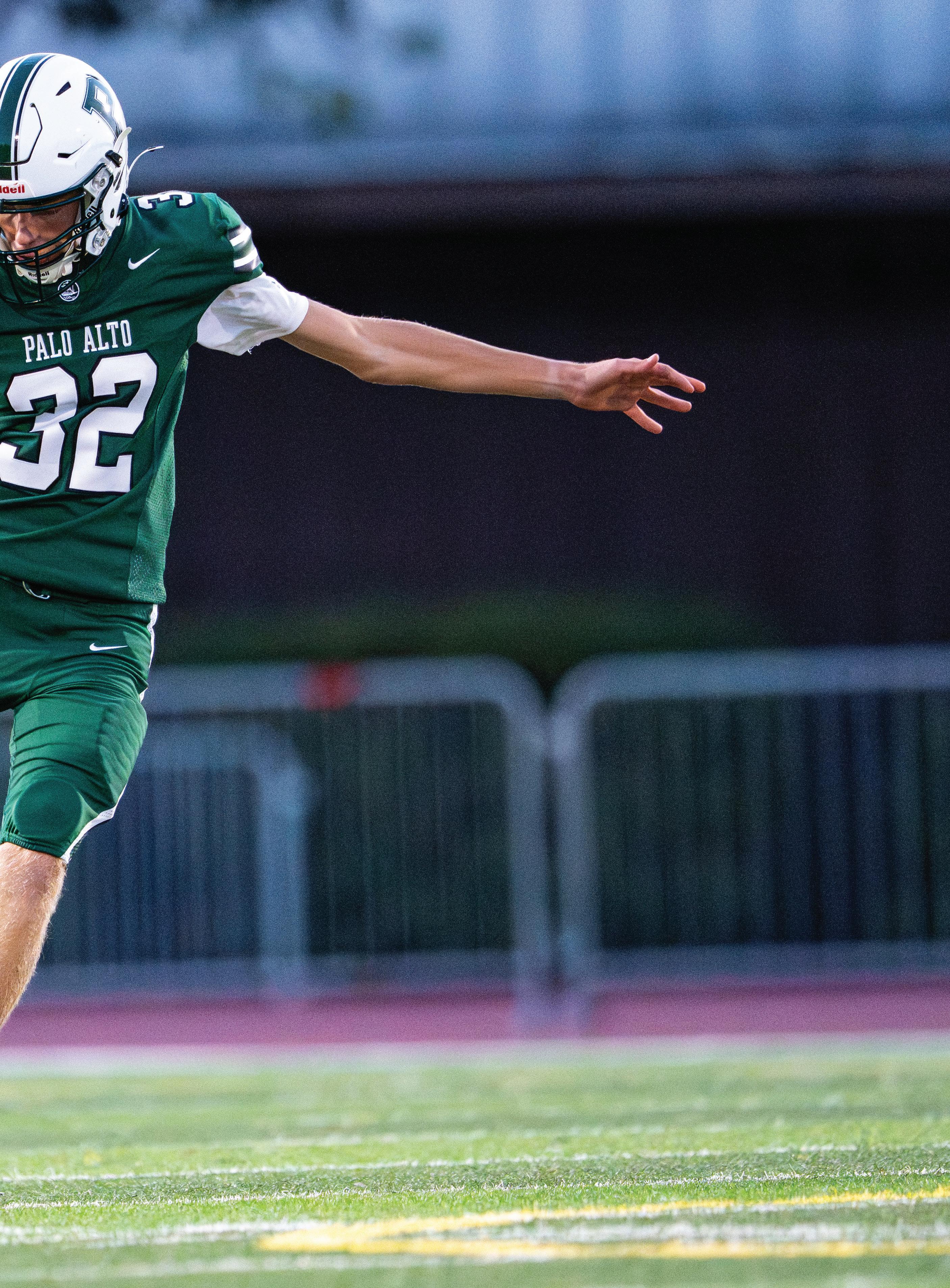
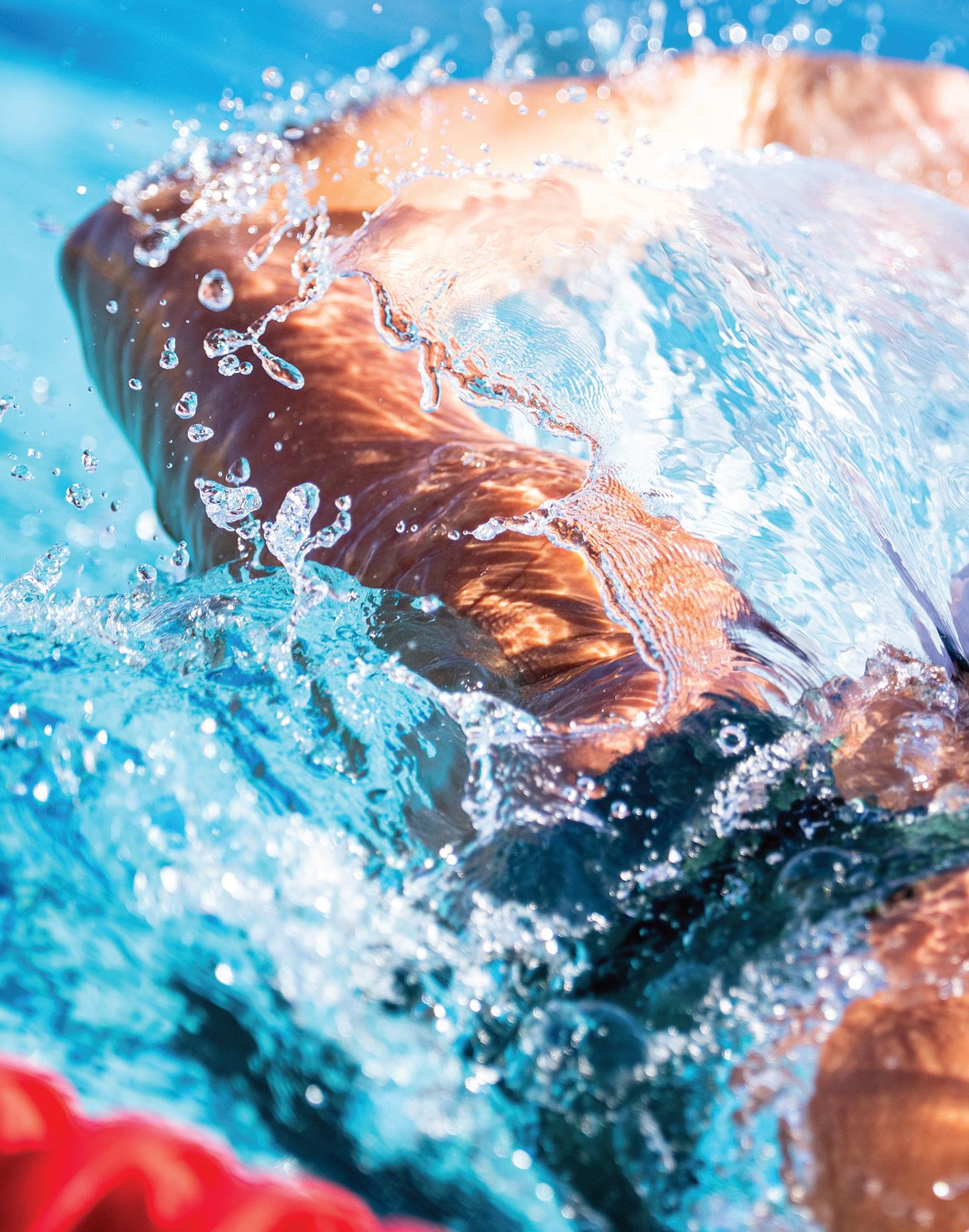

Sabrina Meyers (‘27) blitzes to the finish while competing in a 17-3 win against Menlo-Atherton on Thursday, Sept. 4.

Nathan Rodriguez (‘27) races into a big collision in a 46-44 loss to Milpitas on Friday, Aug. 29.


Maura Hambly (‘27), leaps into the air for a serve against Mountain View in a 3-1 win on Monday, Sept. 22.
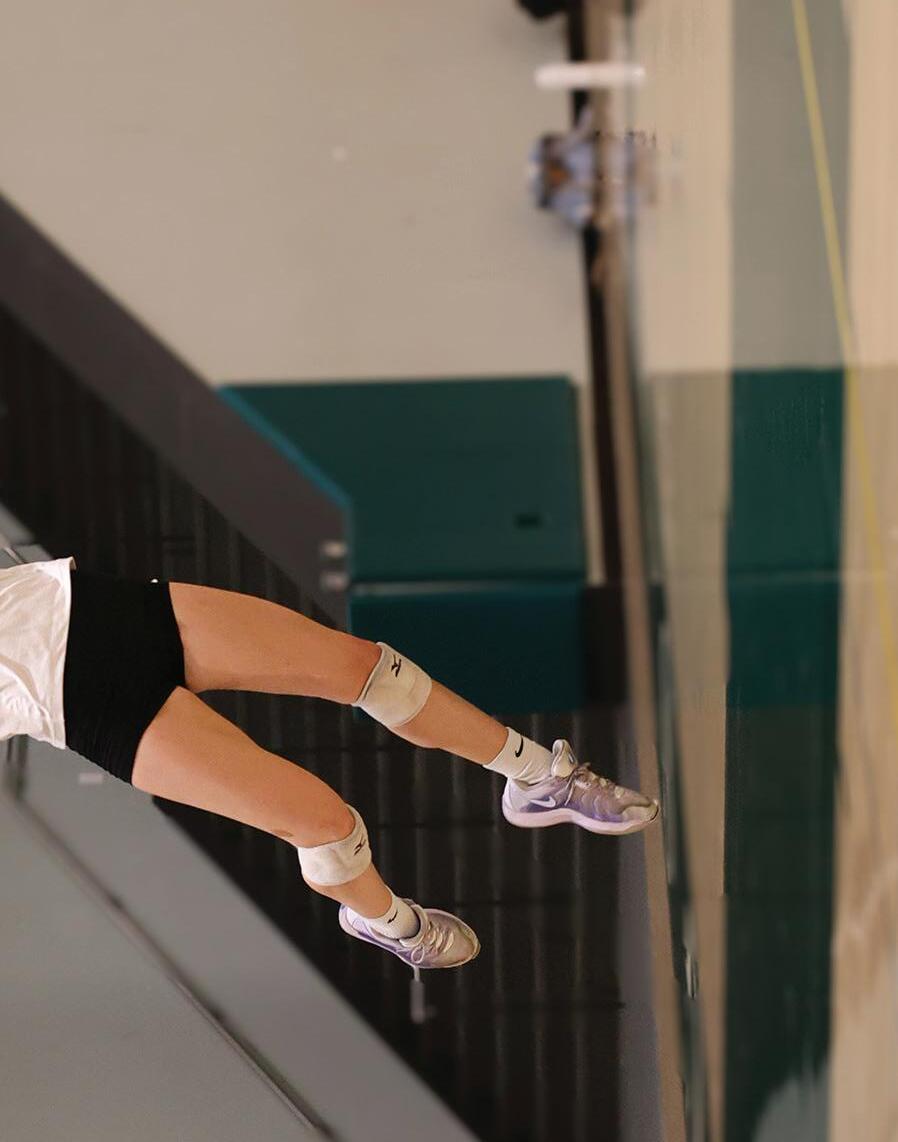
Segev



i n g n
“I love my shoes because I resemble my play style after Trey Young, and wearing the shoes of the person who you model your game after gives me a boost of confidence.”
‘2


uniform I have because they’re such a simple color.” by amanda goody, elif dogan and ian cierniak










k‘27 comfortablecleatsIhave had,theyhavesuchasnugfit, andacolorthatstandsout.”

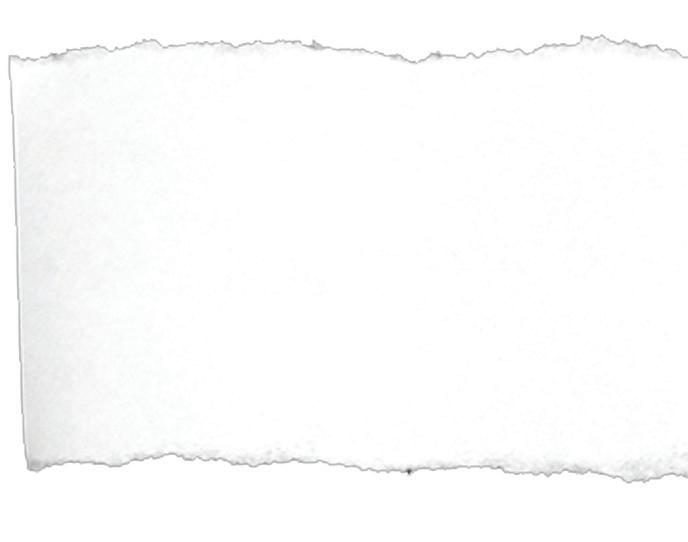
“I
love my shoes because the cleats are very sharp, which keeps me steady and able to quickly pivot. They are very fashionable and comfortable.”

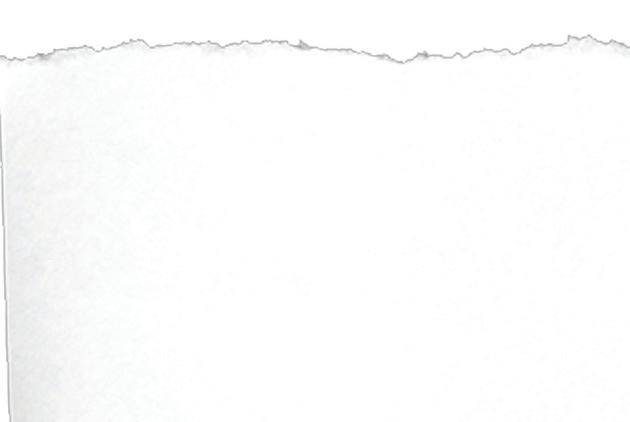


We asked three people close to Delilah to tell us what they think she’d say. Here’s how it went:

COACH: TEAMMATE: CULPRIT:



Favorite Pregame ritual? Pregame Hype song?
Pregame snack?
Favorite opponent?
Funniest teammate?



Eye of the Tiger
Sharing the largest bag of Cheetos
Largest hottest bag of cheetos
or Gunn
or herself
or late games?
How long has Delilah played for?







Make the game-winning save or the game-winning goal?
By AMANDA GOODY, ELIF DOGAN and IAN CIERNIAK
Maeva Herbert-Paz
“Block, 100%, because defense is what wins games, and good defense is the best offense.”
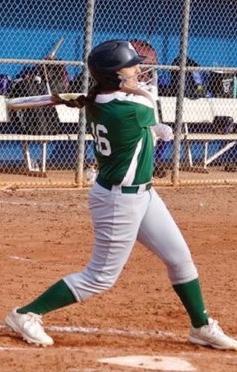
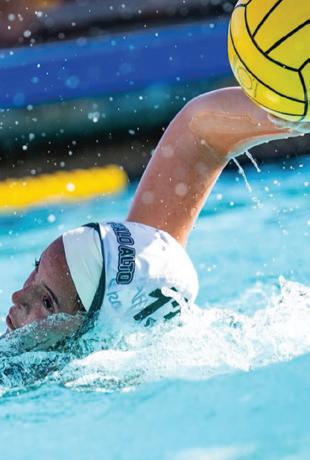

Silas Steele ‘28
“I would prefer a game-winning block because I play defense myself and I would love the huge adrenaline rush that comes with it.”
“Game-winning goal because it takes a lot of teamwork to advance the ball, and making [it’s] a reflection of the team’s effort.”
“Game-winning shot because it’s a lot more satisfying to make a game winning shot.”


By ANDY COMSA and ELENA SALVATIERRA,
Photos
courtesy of
Annie Kasanin, Katie McCue, & Henry Germain Cole and Mack






with NOLS (National outdoor leadership school) — an organization that teaches wilderness skills through immersive backpacking expeditions. While cross country offers a fast-paced and exhilarating environment, backpacking provides Kasanin with the opportunity to slow things down.
day and planned to meet up back by a pond, due the the GPS malfunctioning, their excursion was extended.
“We ended up walking an extra four miles in total, two miles back to where we thought the pond could be,” Kasanin said.

er, Wyoming.
“The top of a peak surrounded by no peaks is the worst possible place to be in a lightning storm so everyone was pretty freaked out,” Kasanin said.
Despite the fear involved with the sport, many like Kasanin leave each trip wanting to come back for more. As soon as school is out for the summer, high school students have the time to seek out transformative, intense experiences. According to the National Library of Medicine, well-designed summer programs can boost youth safety, physical and mental health, social-emotional development and academic learning. For many, backpacking has been at the forefront of the various summer activities available. Backpacking is defined as traveling or hiking whilst carrying all of your belongings and necessities in a backpack.
Kasanin, a former cross-country athlete, spent her summer adventuring
“Backpacking allows you to enjoy the nature around you,” Kasanin said. “I’ve learned so many valuable lessons, and I look back at them and most ly re member laughing with my friends.”
“Backpacking is similar to playing basketball because it is a lot about pushing past physical challenges to experience something great.”
— Katie McCue ‘27

This at titude was a valuable tool to get her through some of the many unpredictable moments of the trip. Oftentimes the GPS would malfunction, causing the group to get lost during critical moments of the trip. For example, the group split up one

According to travel blog called Dream Big Travel Far, in 2007, 6.6 million backpackers nationally which spiked enormously by 2021, with 10.3 million, resulting in a 52 percent increase over 14 years. One factor that could have led to this jump in participation, is the mutual inspiration and community backpacking cultivates between friends and family.
Junior and varsity basketball player
Katie McCue recently went backpacking with her family to celebrate her sister’s

graduation. Mccue is a dedicated player and is constantly working to improve, even in the off-season. Along with her contributions to the basketball team, she is a member of the club team Fever. Mccue connects the challenges and rewards of both basketball and backpacking.
“[Basketball] gets really hard and tiring, but ultimately I do it so I can enjoy the game,” McCue said.
because the hike wasn’t very far,” McGraw said.

“I
would definetely reccomend going at least once just to be out in nature and disconnect from
Student athletes reflect on their unique experiences with backpacking and how it contributes positively to their mental health.

For junior Owen McGraw, a high school sprinter, his backpacking trip was based in Twain Harte, California. McGraw originally didn’t have an interest in backpacking, but was introduced to it by a friend.
“My friend Mack drew me to go on this backpacking trip because it was a part of visiting Twain Harte in the summer and I thought it would be a new experience,” McGraw said. Backpacking, McGraw quickly discovered was very different from sprinting.
“It’s very long and aerobic unlike sprinting, I don’t think it necessarily stretched my mental or physical strength
For McGraw, the trip wasn’t about the intensity, but rather experiencing the outdoors at his own pace in a way his sport can’t offer. One element that backpacking provides for many is a much needed escape from social media.
Junior
Clement Romanski, a member
of the Twain Harte trip, highlighted this as a positive of the experience.
“Hiking brought everyone closer as time went on, especially with the absence of technology,” Romanski said. According to National Library of Medicine multiple studies show that time in nature reduces stress levels, lowers anxiety symptoms and can improve mood regulation. There are many theories, such as biophilia hypothesis- put
forward to provide reasoning surrounding the positive effect of nature on youth mental health. This theory, first introduced by biologist Edward O, highlights the idea that humans are drawn to nature due to evolutionary bonds and our ancestors’ dependence on natural environments for survival.
Programs such as NOLS, which take place completely outdoors tap into this idea and require one’s daily activities to revolve entirely around nature. Keeping this in mind, Kasanin envisions additional opportunities outside of NOLS for her future backpacking experiences.
‘It was such a unique experience that I can’t really relive,” Kasanin said. “I would definitely go backpacking with friends and family, maybe just not another NOLS course.”
As reflected in all of these experiences, backpacking trips are a good break from the real world and can improve people’s mental wellbeing, they also have the power to build great relationships through the long periods of time spent walking.





Mack,Owen,andHenry atthesummit




By GREG GOODY and CARTER BURNETT
Junior Harper Skey just became the national youth doubles champion in rowing — one of the most mentally and physically demanding sports.
Early in the morning, while most Paly students are sound asleep, junior Harper Skey is out rowing on the water, the oars slicing through the glassy surface. As an underappreciated sport, rowing at a high level requires a commitment that may not be widely recognized.
Men’s rowing was established in the Summer Olympics in 1900, with women’s being established in 1976.
Today, over 150 countries partake in rowing.
In addition to the Olympics every four years, the World Rowing Federation hosts annual World Rowing Championships with 22 boats competing simultaneously.
At the high school level, the highest form

9 a.m. After school, Skey normally has a bite to eat and then he spends an hour or two weight training and using the rowing machine. He then eats dinner, does his homework and is in bed by 10 pm, ready to do it all again.

“There’s somebody out there training harder, and you need to be better than them.”
Rowing practice is unique in the sense that it is extremely physically demanding, but it does not require much else. There are no baskets, set plays, or field positioning — It all comes down to who is more physically and mentally tough.
— Harper Skey (‘27)

“There’s not really any strategies or schemes, all that matters is how much harder you can train and prepare yourself for your competition,” Skey said.
Another important part of practice is the mental
“Then once I got older, I realized I wanted to be great at something, but I had horrible hand-eye coordination, so ball sports were out of the question. I was a swimmer for a bit, but I knew I didn’t want to continue swimming. So I tried rowing and loved it.”
Skey strictly believes in the fact that the amount of work you put in is the amount you get out of it and pushes himself as much as possible to reap the benefits of his hard work.
Over this past summer, Skey completed one of his lifelong goals of becoming a national champion in the Men’s U17 doubles competition.
“It was surreal,” Skey said. “We had trials and semis and both times we finished before the second-place team by half a second. The third-place team and the rest were far off, so we knew we didn’t have to worry about them.”
Knowing that the other teams were not a threat allowed Skey to center his focus solely on the second-place team. He knew it was going to come down to the wire — a battle of wills that would decide who would come up on top. Being on a


pressure on the athletes’ performances. Before the start, the judge commences the race and Skey must get his mind right to manage this added pressure.
“I kept playing in my head a scenario where we would lose and the disappointment that would follow,” Skey said. “This helped me focus my mind solely on getting the win.”
Although this mindset has helped him breeze through the first 200 meters of the race, the other 90 percent is where the athletes are really tested. Skey describes what it was like after the first 200 meters of the 2000-meter race.
“It was just the most grueling game of who could hold out the longest at the higher stroke rate,” Skey said.
To give themselves the best chance to come out on top, a quarter into the race, his team upped the stroke rate by one stroke and then again at three-quarters in. Skey then illustrates what the last 400 meters of the race were like.
“You could hear the cheering from the people on the land, but you couldn’t let that distract you, it was just a pain race until you crossed the finish line,” Skey said. “Going into the last 200 meters, my
my legs. I didn’t even notice when we crossed the finish line because of how out of it was, then I saw the boat behind us and started celebrating. Once I got out of my boat, I blacked out in my dad’s arms.”

After winning a national event, many people would feel proud or a sense of accomplishment; this was not the case for Skey.
“It just felt weird that we were national champions now,” Skey said.
Alongside Skey was Reid Kawaja, a sophomore at Woodside Priory.
Kawaja credits Skey for always being on his A game and making practice more enjoyable.
“Harper is very hardworking and

mainly just make sure that he is on task and not doing something that he is not supposed to do,” Skey said. “In rowing, every stroke matters, and you have to be attuned to all your strokes through the race because one small mistake could cost you.”
“Harper is very hardworking and always wants the boat to go faster.”
He emphasized that the mental aspect of rowing is the biggest struggle with the sport, as constant motivation is needed for such a physically draining sport.
— Reid Kawaja (‘27)
“You need to develop a mindset that you will go through the pain longer than everyone else to win. And that mindset is probably the hardest thing to gain,” Skey said.

Rowing is often not in the conversation for the hard-


The shinai sword cracks and echos across the daunting gym. The packed stands snap silent. All attention pin-pointed at the two opponents in the center, masked, facing each other in dead silence. Paly junior Victor Chen bows at the center of the shiai-jō, the taped match area, just next to Japan’s Imperial Palace. This is his second invite to a youth kendo championship in Tokyo while representing the United States.
During Chen’s stay, he spent time training with elite players at a corporate dojo inside Nippon Express. Soon after, he then competed in a venue so prestigious that royalty stopped by.
“There are some imperial family members that came to watch,” Chen said. “Being chosen to represent the United States twice…and training with high level players…it was a really unique experience.”
Kendo isn’t the only sport found through unique communities. Across the country, various states run varsity high school sports programs that California does not. From bass fishing all day in the beating sun, to bowling under the alleyway lights, to E-sports. Almost anywhere you go outside of California, there is a unique high school sport being offered that many individuals enjoy participating in.
In Japan, experiences like Chen’s are part of normal high school life. Kendo is offered in high school with many different teams, coaches and national tournaments.
However, kendo isn’t a CIF-sanctioned sport, meaning it isn’t offered as an official high school sport in the state of California. Most students interested in participating find kendo through community dojos or clubs instead and have to deal
By ISAAC TELYAZ and DYLAN FUJITA
What do we get when we look past the C.I.F.? Many sports are sanctioned in other states at the high school level that may seem surprising to Californians. These unique high school sports create different experiences and memories.
with juggling practice and competition travel around class schedules.
In states with many lakes, bass fishing is a popular varsity sport with weigh-ins and state titles at stake.
Vermont’s 2024 state champion, Hailey Isham grew up on the water and has been influenced by it her whole life.
“I grew up fishing with my family…since a young age, I’ve been competing in not only bass but other fishing tournaments as well,” Isham said.
Additionally, her best day as a fisher was about more than a trophy. It started before sunrise at the launch ramp and ended at the weighin stage. After a long day on the boat alongside her brother and her dad, she was able to take home the state title as well as a memory that will last forever.
lake is also a challenge that the sport faces, as rosters are dependent on coaches who have boats.
“While there are a few teams that have 10+ anglers, many only have a few,” Isham said. “Some schools also don’t have a team due to not having a coach with access to a boat.”
As one of the few girls competing, her win mattered even more. Her state title felt like both representation and an invitation to other girls who might have that dream.
“It showed other girls that they should put themselves out there, even if it’s in a boy dominant area of interest,” Isham said. “[Bass fishing] has shaped my high school
“Kendo is for everybody.”
— Victor Chen ‘27
“Winning states has been a dream of mine since middle school,” Ish am said. “I accomplished that goal…with my brother and Dad by my side.”
Isham was surprised that Califor nia doesn’t offer bass fishing as a high school sport, as it is a norm where she is from and believes it is a great opportunity for people who are new to fishing.
“Honestly, that surprises me,” Ish am said. “It should be an opportu nity everyone gets. It gives people with maybe less access to fishing a chance to get out on the water.”
Access to boats, equipment and just being able to get onto the
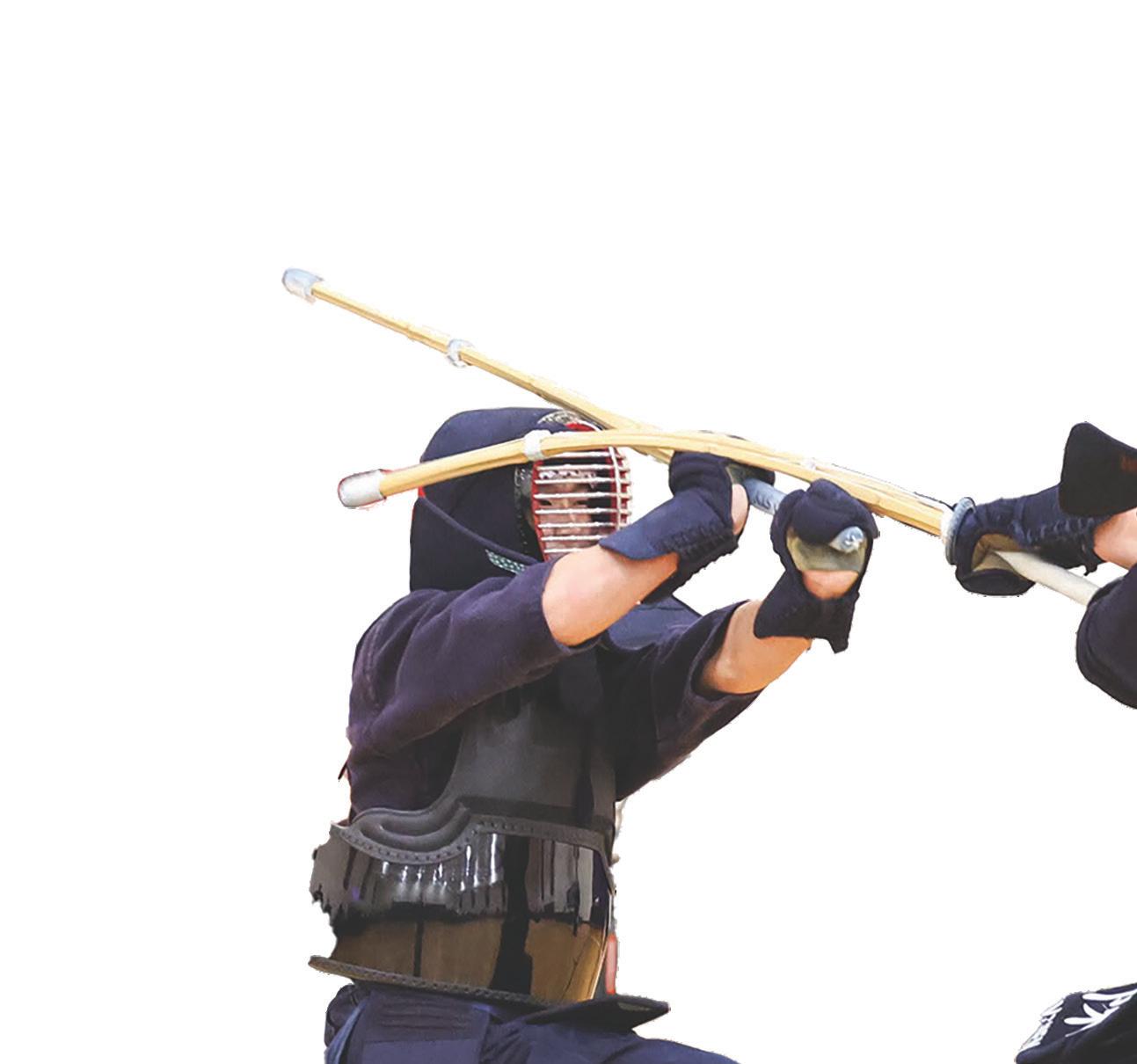
and develop school teams. Whereas, long drives to lakes, drought and limited access make programs harder to run. Even local rules, such as catch and release and boating policies, dictate how practices and tournaments can work. The tradeoffs include various logistics, as well as finding the perfect weather conditions while being on the lake. On the upside, bass fishing builds real-time de-
Training often means sharing the floor with adults, which can be intimidating at times, but also speeds up growth and improvement.
“Coaches can really give more attention,” Chen said. ”You end up training with stronger adult players and you improve really fast.”
Anyone struggling to find or join a unique sport knows that it can be very difficult. It’s important for everyone to be open and be willing to give new sports a chance, even if they are less known.
lage, Colorado. In Colorado, e-sports are officially sanctioned by CHSAA, which is Colorado’s CIF equivalent. For players like Verrière, e-sports are an essential part of the high school experience.
“Playing e-sports has definitely shaped my high school identity. People know who I am, what I do and that I’m passionate about e-sports,” Verrière said. “Without e-sports, I don’t know how I’d survive high school.”
“Find your closest dojo and try a practice, there are no cuts,” Chen said. “Ken-
“Without e-sports, I don’t

Success is more about just winning, it’s about character. Athletes bow to their opponent, calm their breathing and practice control and respect. These are habits that carry over away from the gym and into personal life.

“Kendo is a little more spiritual than most sports,” Chen said. “Through being a better person, you actually become a stronger player.”
Coaches at big practices and tournaments look for skill, character and composure after mistakes. Not everything is about being the most dominant, but more about how you can lift others up.
“They care a lot about if you’re coachable,” Chen said. That characteristic helped him make the Northern California rep team and the U.S. Junior Team not just once, but twice.
In Japan, kendo is more embedded in high school with teams, gyms and regular competitions. Whereas in California, it mostly lives in community dojos, so access, practice times and competition schedules rely more on club scheduling rather than a CIF calendar.
Upsides to being a part of smaller groups include lots of coaching attention, fast growth from training partners and a deep focus on respect, mindfulness and composure. Additionally, kendo is inclusive and a no-cut sport.
Although, some trade-offs are that gear can be expensive, tournaments often require travel and fewer peers can make recruiting more challenging. Despite these tradeoffs, kendo offers a unique path to cultivate discipline, respect and a close community.
Throughout the past several years, electronic sports have gradually become recognized among American varsity athletic teams. In California, high school e-sports teams compete through outside organizations under the umbrella of the CIF Esports Initiative, which endorses and supports these programs. However, e-sports has not yet made its way to official CIF sanctioning. As a result, e-sports is not yet treated on par with sports like basketball or soccer. Conversely, other states, such as Utah, Georgia and Mississippi, recognize e-sports as an officially sanctioned high school sport.
Armand Verrière is the co-captain of the e-sports team at Cherry Creek High School, a high school in Greenwood Vil-
Verrière believes that high school e-sports should be sanctioned nationwide, and that his experience would differ if he lived in a state like California, where e-sports aren’t officially sanctioned.
“I’ve never really thought about e-sports not being sanctioned in other states before. If I lived in California, my experience would be different,” Verrière said. “High school e-sports are growing in the US, and having it sanctioned in California would be a great thing for students.”
Another popular sport outside of California is bowling. Similar to esports, bowling isn’t a CIF-sanctioned sport, but some California schools still have bowling teams. These teams operate outside of CIF rules, often competing through local or regional bowling associations, club leagues, or other independent competitions. In states like Illinois, New York and Michigan, bowling is sanctioned and students compete in official state tournaments with full varsity recognition. This includes regional and state championships.
For senior Esmerelda Rosado from East Ridge High School in Clermont, Florida, bowling has always been a major part of her life.
“This sport has always been in states I’ve been to, so I never noticed that it isn’t offered nationwide,” Rosado said.
Still, bowling doesn’t always get the same recognition as other varsity sports, even in states where it is sanctioned.
“If I lived in California, I don’t think my high school sports experience would be too different because most people don’t consider bowling a sport,” Rosado said. “Along with the fact that it takes certain funding.”
Student athletes like Victor Chen, Hailey Isham and Esmerelda Rosado show how high school sports vary across the U.S. Some sports, like kendo, bass fishing, e-sports and bowling, thrive in certain states but remain club-based or unsanctioned in others. Access, environment and funding shape opportunities.
or those who have never been to the gym before, you might imagine yourself walking into an environment where everyone is watching, critiquing and comparing, where one mistake in your form leads to public humiliation.
Just as with any other place where people routinely gather to complete similar tasks, gyms form a community around its members. Members of the gym community share interests, experiences and knowledge. These have created various rules and expectations surrounding the gym. These rules, which include fears of ego lifting, maximizing protein intake and many others, are collectively known as gym culture. While much of gym culture is positive, there are multiple negative stereotypes surrounding the gym, including the fear of judgment mentioned above.
This stereotype runs deep, with social media often the source of these fears. For many prospective gym-goers, Instagram reels showcasing unrealistic physiques can transform the gym into a members-only club. This was initially the case for senior Tirian Melean, an avid gym-goer who has gone through the entire process of being a beginner.
“One stereotype that I dislike is the immediate thought that big people are intimidating and have more of a right to the equipment,” Melean said. “Everyone in the gym is equal, no matter your experience or size.”
In fact, despite the common stereotypes suggesting that gym-goers are intimidating, judgmental and overly competitive individuals, gym culture
By FINNEGAN SCHOEBEL, NATHAN LEE and MAX MERKEL
With the rise of weightlifting, more high school students and athletes are integrating structured programs to grow stronger and be heathier.
contains many positives as well. According to Lara Saslow, a Paly senior who has consistently worked out for multiple years, even though gym culture has room to grow, there are still many advantages.
“Gym culture can be improved by being more supportive and uplifting rather than any potential hate going towards other people,” Saslow said. “I do think that one beneficial aspect of gym culture is the competitive nature, as it drives people to do their best.”
Gym regulars were all once beginners. They remember struggling with basic exercises and being lost on the machines.
strong enough,” Saslow said. “The only way to overcome this is to keep showing up consistently.”
Becoming the best... is also about staying disciplined in the weight room. “ ”

If you ask for a spot or some advice, they are almost always happy to help where they can. In the gym, there is a world bigger than ‘how much do you bench’.
Beyond fear of being intimidated by people who have spent far more time in the gym, there is also the fear of messing up. Saslow recognizes that fear of embarrassment deters people nearly as much as intimidation.
“I think that something that keeps some people from going to the gym is being scared of looking stupid because you’re doing something wrong or aren’t
However, what some athletes find most challenging about going to the gym is consistently showing up. Especially when optional off-season training for your sport is a factor. The fact that these workouts don’t show immediate results, makes it difficult for many athleste to stay motivated. Despite all of this, junior Edison Lee, a sprinter and hurdler, has found himself dedicating his afternoons and weekends to the gym to improve his times.
“Becoming the best at our sport isn’t just training on the track, it is also staying disciplined in the weight room,” Lee said. “When you delay instant gratification, you will get long-term satisfaction.”
Delaying gratification is the ability to resist an immediate reward in favor of a larger or more meaningful one later. This isn’t just something that is known but has been extensively studied. Research from the Associated Clinic of Psychology found that “delayed gratification is a powerful predictor of long-term success, emotional well-being and overall health.”
For student-athletes, the idea of disci-
pline and consistency resonates differently when your performance affects not just the individual but the whole team. Additionally, weightlifting during the offseason, when an athlete isn’t in the middle of their traditional season, can improve performance heavily.
“I think that weightlifting is really beneficial…especially during the offseason,” Saslow said. “You need to be getting stronger year-round, and when you’re taking a break from your sport, that’s a great time to focus on strength.”
efiting the team overall in the long run.
Even in sports like cross country and track, weight training is critical in preventing season-ending injuries.
“Becoming the best at my sport isn’t just training on the track, it is also staying disciplined in the weight room,” Lee said. However, with a growing number of Paly sports implementing weightlifting into their programs, some resources are often unavailable to non-athlete students. This isn’t a new issue — it was present last year as well.
Make small but smart changes and choices in your diet or your nutrition plan.

At Paly, the iron plates smashed together with a sound that had become natural in the morning, as the lights of the gym buzzed to life. Weight lifting has become a larger part of sports with the new strength coach at Paly. Senior Kacey Washington, a veteran Paly football player, has gone through years of morning practices.
“We haven’t really seen the results yet, but we know it’s working,” Washington said. “It builds discipline, and it also helps us with our focus and overall strength.”

Senior Veenu Damarla, an avid gym-goer, has encountered this problem.
“Although the gym is open every
day now, there is a lack of squat racks, if any, that I can use after school,” Damarla said. “But, I appreciate the gym being open every day compared to last year.”
For others, gym accessibility still poses a problem. For these students, various factors can limit their ability to easily access a gym, whether it be physical distance, time, or the expense of a gym membership at various private gyms. Sometimes, it’s just more comfortable to exercise at home, away from the crowds and noise that can fill a commercial gym. In the case of senior and veteran gym-goer
While working out at home can make it easier and more enjoyable to complete a workout, it can require a bit of creativity. Aside from a fully stocked home gym, which is far and in between, workouts at home have access to far less equipment than a traditional gym. In many cases, gym goers attempting to do their workouts at home may need to do different versions of exercises to make due with what equipment and space they have at their disposal.
“My home gym is basically just a bench press and some dumbbells,” Melean said. “I’m able to get basically all my exercises done, but I do them with dumbbells instead of cables or something similar. Even if I can’t get the exact exercise done, I’ve always been able to find another way to work the muscle [group that the exercise prioritizes].”
While this increased accessibility (be it working out at home or in the commercial gyms with increasing availability) opens doors for more students to start their fitness journey, understanding how to train effectively requires proper form and knowledge.
One of the most essential parts of a gym-goer’s focus is how to maximize their development. In pursuit of muscular strength ‘gains’, many turn to strategically organized systems that involve many different parts of daily life. For example, specific diets are utilized to maximize protein intake, different muscle groups are prioritized on different days, and rest is optimized for maximal muscle and strength development. Coach Thomas has some tips when it comes to being healthier.
“Sometimes I work out at the er times I just do my workouts at home,” Melean said. “I can’t do everything at home, but it’s a lot faster than going all the way to the gym when I’m busy, and I don’t need to deal with lines or other

“Make small but smart changes and choices in your diet or your nutrition plan,” Thomas said. “If you’re having trouble eating properly, just take small steps. Don’t try to do it all at once. For example, instead of eating hot dogs, try to eat a turkey burger.”
A diet is arguably the most important part of improving gym effectiveness —but it’s often overlooked. According to Jacob Kinsky, a recent Paly graduate and
veteran
gym goer, diet is an essential yet forgotten aspect of gym-going. Kinsky, who started a petition to reopen the weight room during his time at Paly, explains that many people looking to get involved in gym work don’t prioritize their diet. Even worse, when they do so, people are potentially hurting their ability to improve without even realizing it.
“The most important part of being strong and growing is how you eat,” Kinsky said. “I always prioritize my diet, and I think that anyone who isn’t is potentially hurting themselves, holding themselves back from maximal success.”
Because having more energy can help one work harder, faster and improve more, it’s an essential building block for anyone looking to build themselves physically. Of course, it is not the only necessity that prospective gym-goers must manage.
It’s also difficult to determine which foods are whole, healthy and nutritious. According to Coach Thomas, many gym goers focus on the wrong nutritional foods, eating unhealthy, processed foods in an attempt to quickly reach their macro goals instead of prioritizing healthy foods.
“[I see] an over-reliance on supplements instead of focusing more on whole nutrition,” Thomas said. “Just trying to get bigger, faster, stronger from eating better carbs, better proteins and healthy fats.”
Beyond the health and nutrition of food, it’s very important to consider other factors in maximizing workout efficiency. Studies often suggest that an organized gym routine is essential for maximizing the effectiveness of a workout. According to the Mayo Clinic, ranked by Newsweek as the #1 hospital in the world, exercising regularly and in routines can reap numerous benefits.
“The benefits of regular exercise and physical activity are hard to ignore,” the Mayo Clinic website said. “Consistency is key”.
However, deciding on the
type of routine to choose may seem confusing, as there are multiple factors to consider when making a decision. For Brian Liu, a Paly senior who frequently works out at a local gym and posts his progress online, selecting his workout routine came down mainly to his goals and time restraints.
“I bounced between a few different options, but I eventually decided to commit to what worked best for me,” Liu said. “Because I knew rest and study time were important, I made a modified workout schedule so that I could keep building myself while not spending too much time.”
In addition, an article in the International Sports Sciences Association (ISSA) describes a total of five major factors: frequency of workouts, duration of workouts, target areas, exercise intensity (what percentage of their one rep maximum weight someone works with) and exercise volume (total number of exercises someone does).
According to Shanley Davey, a Paly junior who often works out as a part of Paly’s football team, building his routine is an essential part of making his workouts efficient. While much of the lifting he does is determined by football coaches, this structure — combined with his own knowledge — has helped him improve dramatically.
“I need to take into account all of these different factors,” Davey said. “But I’ve totally been able to improve way quicker because of considering my goals, frequency and personal limits.”
Typically, a workout routine is divided into a cycle, where the gym-goer repeats a structured group of exercises over a time frame, usually around a week. For example, Liu’s workout routine takes exactly one week to complete, allowing him to balance his schedule effectively.
“I start each week with upper body, then lower body, and then a rest day,” Liu said. “I then do a push day, a pull day, one day dedicated only to my legs, and then I rest the last day of the week.”
In Liu’s case,
resting twice a week allows him to recover effectively and also continue to prioritize his academics. He has been able to achieve impressive physical strength growth over the course of his time attending the gym. Importantly, he has also avoided injuries, remaining healthy and moving towards his goals.
Even when doing all of these things, it’s important to remember that change comes slowly. Regardless of the effort that you make, even with very effective strategies, building yourself up takes time.
All in all, the solution to the harmful aspects of gym culture is to surround yourself with a strong community of teammates or friends who will help motivate and support you. Rather than tearing you down and making you feel lesser, find people who are genuinely invested in helping you out.
“Countless kids go to the gym and grow as people every year,” Melean said. “The people there are so inspiring and friendly, which makes it such a warm and welcoming place. I strongly encourage anyone and everyone to go.”
“ The people there are so inspiring and friendly, which makes it such a warm and welcoming place. I strongly encourage everyone to go.
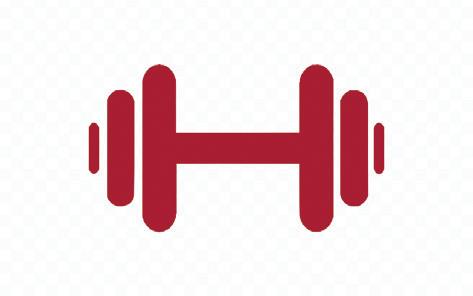














The crack of the bat had once been music to Willem Madwed’s ears, but after constant injuries – the sound of the bat changed. Now it just reminds him of years of frustration, pent up from sitting out because of injuries. Sidelined in the dugout with a tibial stress fracture, he realized that the sport he loved had become a weight he could no longer carry. This is the moment for many Paly athletes where reality and passion collide.

Over 70% of athletes drop out of youth sports by the age of 13, according to the National Alliance for Sports. The numbers reflect the exhaustion, pressure and the most challenging aspects of being a competitive athlete as a teenager in today’s world. But what truly causes athletes to quit, even if they have love for the sport?
In the case of student athletes, it can often feel like an impossible balancing act to keep pushing themselves to the max in their schoolwork and their sports simultaneously.
For many athletes, this is a common reality — go to practice, come home and stare blankly at homework while their body yearns for sleep. In these cases, bodies isn’t necessarily giving up, it can be a survival instinct for overworking the body. Plenty of teams, coaches and athletic communities fail to acknowledge the mental and physical toll that hardcore sports can take on an athlete’s body. This cycle creates a culture where pushing through pain is glorified, while rest and recovery are seen as a weakness.
But within the Paly community, what are the reasons these talented competitors may quit their sports? Every athlete has their reason for stepping away – whether it be injury, mental health struggles, coaching conflicts, the intensity of the competition, or the team culture.
For some this turning point accumulates over time, when constant injuries change the way they see the sport forever. This is the case with junior and former baseball player Madwed.

















Madwed suffered from many injuries during his time playing baseball both for Paly and for a club team. However, the injury that marked the end of his baseball career was a tibial stress fracture. This injury accumulated overtime from repetitive movement and overuse and for Madwed it eventually became too much.
According to Madwed, this injury marked his fifth season of baseball that has been affected by injury in the past five years. All of Madwed’s inju ries caused him to miss critical play ing time in the sport he loved and ul timately caused fear and resentment towards the sport.
“My injuries ultimately made me lose interest [in baseball] and I didn’t want to have to worry about getting injured again,” Madwed said.
Madwed cited that his mental health struggles due to injury also changed his performance in games.
“My will to play affected the way I played as the sea son came to an end,” Madwed said. In his case, his struggles with mental health and in juries eventually caused a decline in performance. Many athletes find themselves in this never-ending full circle of injuries, mental health and declining performance.
stress on the body. It makes these players more prone to injuries, or re-injuring previous body parts. Consequently, many athletes are forced to pick one sport instead of playing multiple seasons. Additionally, many athletes feel the need to quit higher risk sports like football. Junior Owen McGraw knows all too well about the challenges of being a multi-sport athlete with a fear of injury. McGraw played JV football for two years at Paly and has also

Injuries may be a driving motivation for athletes to quit their sports, but for some, fear creeps in before an injury even occurs. Athletes face challenges like overworking their bodies, which is a big risk and can put too much





their time playing football. With around one in four football players in California suffering from injury due to football, playing the game could be considered high risk.
Despite his affection for football, McGraw does not regret quitting. According to McGraw, quitting has


































































given him more opportunities and time to improve his abilities in track and field.
“I’ve always loved track so it’s nice to focus on one sport,” McGraw said.
general.




For junior Kane Do, the choice to leave basketball was about more than avoiding physical harm — it was about preserving his passion. After two years on the JV team, repeated ankle injuries and the grind of balancing sports pushed
“I had been playing since elementary school and kind of lost my spark for the game,” Do said. “I used to love playing, but once it started feeling like a chore, I knew it was time to call it quits.”
Do was experiencing emotional and physical burnout for a sport he lost his drive and passion for. “I realized I was putting all my energy into something that wasn’t giving me anything back.” Do said.

Do feels he is opening up new opportunities to develop his lacrosse skills. “Quitting basketball has given me a chance to grow in lacrosse,” Do said.
As well as physical health impacting athletes, mental health impacts athletes just as strongly. Numerous athletes face immense pressure within themselves, which can lead to anxiety or burnout. Responsibilities tend to pile on top of each other, making athletes overwhelmed with stress that keeps building up.
In a U.S. survey of high school athletes aged 16-17, 91% of athletes reported experiencing some level of stress due to their sport and about 58% said that their stress was moderate to extreme.
Junior athlete Laila Joshi has gone through a similar journey balancing her mental health with sports. Joshi has played many sports throughout her time at Paly — including field hockey, basketball and softball. However, Joshi hasn’t always had the eas-






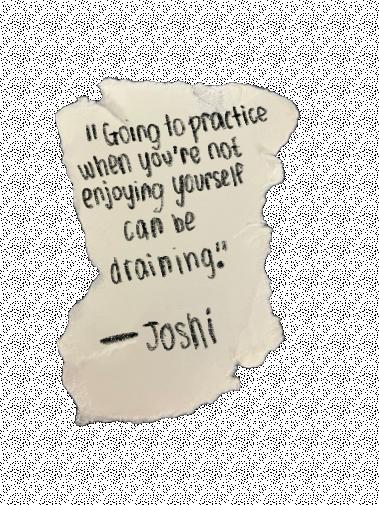
iest time balancing her mental health while playing sports.
“Realizing that my mental health was suffering due to sports was a gradual process,” Joshi said. “I noticed increased anxiety in activities I used to enjoy.” Even though stepping away was the healthiest decision for Joshi, it wasn’t the easiest . “I felt an initial sense of relief from the pressure, but also feelings of regret or guilt,” Joshi said. It was essential for Joshi’s mental health to understand how her commitment to sports was draining her and affecting her experience with anxiety and alternate mental health issues. “Going to practice when you’re not enjoying yourself can be draining,” Joshi said. “It can lead to feelings of resentment, demotivation and burnout.”
Joshi believes that taking steps to help athletes struggling with mental health is important for creating a community of empathy.
“Schools and coaches could prioritize open communication, reduce excessive pressure and provide access to mental health resources,” Joshi said. “Teammates can offer support by being understanding and non-judgmental.”
Experts note that athletes often place intense pressure on themselves to succeed, which can heighten stress and harm their mental health. Dr. Francesco Dandekar, associate director of sports psychiatry and a clinical



























assistant professor at Stanford University, believes that while goals are good, the intentions of these goals are ultimately most important.
“[Goals for athletes] are often outcome-oriented, which puts a lot of emphasis on achieving rather than learning and developing,” Danderkar said. “This can lead to extra stress as well as the pressure to perform at a certain level at all times, which isn’t possible and can drive feelings of anxiety, inadequacy and decreased self-worth.”
Despite the high amount of athletes who experience these mental health issues, there are warning signs to these issues that athletes, coaches, parents or peers may be able to catch.
“A few general things to watch out for are: changes in sleep patterns (sleeping a lot more than usual, hav ing difficulty falling asleep or staying asleep), changes in eating pat terns (eating a lot less than usual, count ing calories more than usual, eating a lot more than usual), withdrawing socially and isolating, decreased interest and enjoy ment in their sport, school, friendships and hobbies,” Danderkar said. “Additionally, im paired performance cally or at school.”

ic departments.
“Student-athletes tend to come into high school and try new things,” Davis said. “Some sports they enjoy and keep play ing. Other sports they don’t enjoy as much.”
Davis shares that in many cases, athletes quit because of exploration.
“Girls might go out for a sport like Field Hockey or Flag Football, which they may never have played and try it for a year,” Davis said. “Then, they might try something different. I think of it more as sampling different
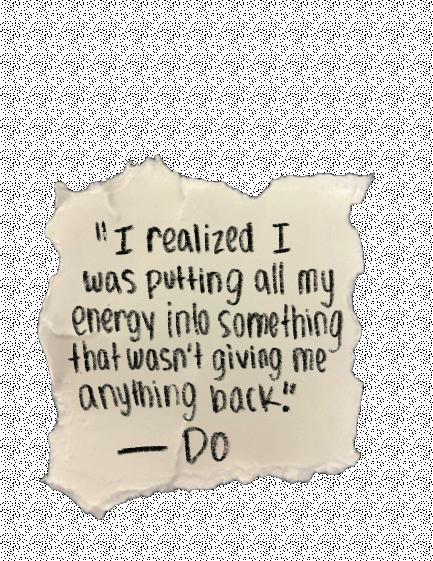
Beyond individual cases, Paly athletic director Scott Davis reflects on certain patterns he has observed while working in various high school athlet-
However, high school sports tend to increase in difficulty throughout the four years. Varsity-level sports raise expectations and competitiveness for student athletes and the shift to focus

in terms of teaching more skills,” Davis said.
“When you get to the varsity level, the hope is you have already developed those skills. Competition is also fun—but win or lose, if you compete, that is part of the experience.”
In the case of junior Mariah Ball, competition and commitment was a contributing factor to why she quit volley-
two years at Paly; however, Ball decided to quit before her junior year.
“I love volleyball, but I needed to prioritize my academics this year, especially because I knew junior year would be really tough,” Ball said.
Ball believes that the commitment to practicing five times a week for two-three hours a day takes too much time and in her view, the costs outweigh the benefits.
“I wish I could play this year, or they could somehow find a solution that is a less serious time commitment,” Ball said. “But since girls




























































volleyball is so competitive at Paly, I don’t see that happening.”
Similarly to Ball’s situation, Davis believes that academics play a contributing factor in whether an athlete pursues a sport at varsity level.
“I think it [academics] plays a huge role,” Davis said. “When you get to your junior year and your workload increases, sometimes you decide to make choices that are best for you and that might mean focusing more on academics.”
Ball’s experience isn’t unique. High school tennis coach, Andy Chang, sees students walk away when competition shifts from something fun and

extremely significant role in stu dent-athletes. Mental aspects direct ly impact the way students feel about their sports, whether it’s the team dynamic, coach or even their allotted playing time. of these factors contrib ute to how an athlete feels when participat ing in their sport.
“They want to do the best they can and they put too much pres sure on themselves and that impacts their enjoyment and possible desire to continue play

Many athletes find it hard to con tinue when they don’t receive the playing time they feel is deserved; they show up to practice every day, yet don’t feel included socially or respected by everyone, including
An anonymous Paly graduate, *Ashley, said that her experience with her coach is what drove her to quit her sport. *Ashley played her sport for her first three years at Paly, but after her experience as team captain during her junior year, the pressures proved to be too extreme.
“The year before I became captain, I didn’t carry as much responsibility,” *Ashley said. “Coach valued me as a good player and put me in because I worked hard and made that clear in practice and in games.”
But interactions with her coach shifted between when she was appointed team captain.
“When I became captain of our team, the dynamic switched,” *Ashley said. “I was expected to perform perfectly and run the team, but when





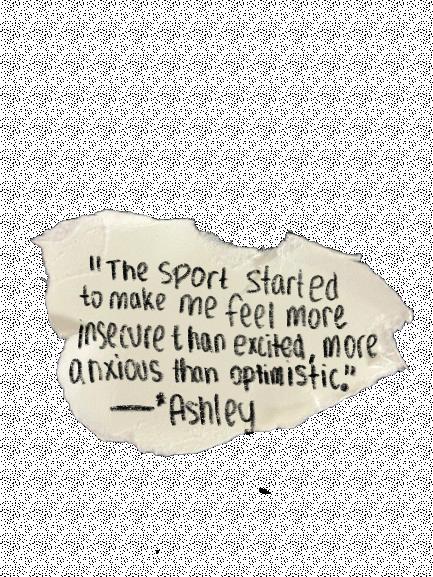



I wasn’t respected or didn’t get playing time, I received no sympathy. Winning became a priority; not the wellbeing of players or the effort we
*Ashley reported that the pressure was felt throughout the team, but many of her teammates felt they couldn’t leave because there was too much going for them. Looking back, *Ashley remembers the moment her feelings towards the sport
“It makes me upset to think that a team and coach would urge me to quit a sport I loved, but it just came down to where I could find the most self worth,” *Ashley said. “The sport started to make me feel more insecure than excited, more anxious than optimistic.”
Some coaches may take for granted how deeply their words and criticisms affect their players. “Coaches make such a great impact on a meltable high school athlete’s brain,” *Ashley said. “We take what they say seriously and think about their words for longer than they know. We already beat ourselves up for the mistakes we make and it’s not fair as a coach to harp on them more.”
A report in the Journal of Sports Medicine found that 30% of youth surveyed cited negative actions by coaches or parents – such as favoritism, poor teaching and pressure to win – as a reason for quitting sport.
After her junior season, Ashley took a break from her sport— and ultimately made the decision not to come back. “After taking a hiatus from playing for about six months, I felt happier and more fulfilled than I















did on the team,” Ashley said.
Despite her negative experience with her coach, Ashley’s decision took careful thought. “[My decision to quit was] so hard,” Ashley said. “I truly had a passion for it and having my relationship with the sport tainted is still a hard pill to swallow.”
However, according to Ashley, when looking back, she has no regrets.
“High school sports should teach you discipline, friendship and hard work,” Ashley said. “They shouldn’t give you stress to show up to practice and games. To this day, two years later, I still know it was the right decision.”
Some student-athletes find that their decision to step away is due to a lack of competitiveness that school sports provide. Junior Oakley Koegler, who had previously participated on the varsity boys soccer team, decided to quit high school to solely focus on club soccer. “I don’t play high school soccer because my club season runs over the same time period,” Keogler said. “I would rather play club season than high school, because club is more competitive.”
For athletes like Koegler who plan on playing in college, club-level sports offer a higher-level environment compared to high school sports. This environment offers more exposure, which may be something high school soccer lacks.
“The levels are just super different; the club level is significantly higher,” Keogler said. “I mean, that’s how you get recruited to college, right? People don’t get recruited for playing high school soccer.”
This is the case for many athletes who seek to compete at the collegiate level, where their priorities are rarely about having fun and mainly about pushing themselves for recognition and growth.
Competition plays a significant role in sports, sparking a large debate about whether high school sports should prioritize high-level competition or focus on the enjoyment of the sport.
Tennis coach Andy Chang shares how the pressure of competition against teammates for status affects athletes and their commitment to the sport.
“I saw a lot of people quit once they realized they weren’t going to get the role they wanted,” Chang said. “Some varsity players stopped showing up because they weren’t playing singles, and some JV players quit because they didn’t make varsity. For them, it felt like the effort wasn’t worth it if they couldn’t put ‘varsity’ on their résumé.”
“If you define success only as making varsity or winning matches, you’re setting yourself up for disappointment,” Chang said. “Those things are never 100% in your control — coaches decide rosters, opponents play better or worse on a given day. But what you can control is how much you improve and what you learn from each season.”
Athletes who focus too much on titles lose sight of the true value of sports. “If you quit just because you didn’t get varsity, you miss out on those chances to grow,” Chang said.
Because of these dangers, balancing the amount of competition within high school sports can be a challenge.
“If the students can focus on ‘I want to get better, no matter the outcome’ instead of ‘I want to win’, I think they will immediately be able to deal with losses with more positivity and start to enjoy tennis, sports and life in general a lot more,” Chang said.
Overall, the reasons athletes leave their sports are as diverse as the sports and athletes themselves. However, whether their reason for quitting be injury, mental health, time restraint, coaches, competitiveness or something else, these athletes have one thing in common: they prioritized themselves. Most often, quitting isn’t a sign of weakness or failure, but a sign of self-awareness.
*Ashley offers advice to others who might find



themselves in a similar situation.
“If you look back in two years, would you truly regret taking yourself out of a situation you weren’t happy in?”
Whether it’s focusing on academics, or bodily health or mental health, these athletes are defining what commitment and success means for themselves. These decisions show that for athletes, pushing through pain is not always the right approach and at times, choosing to step back and care for oneself can be just as valid.










From football to field hockey, exchange students find that athletics at Paly are more than competition—they’re a pathway into friendships and community.
into American culture, friendships and school community. Whether it’s learning the different systems of American sports, or adjusting to school spirit and pride, these international athletes bring unique perspectives that can enrich their teams.
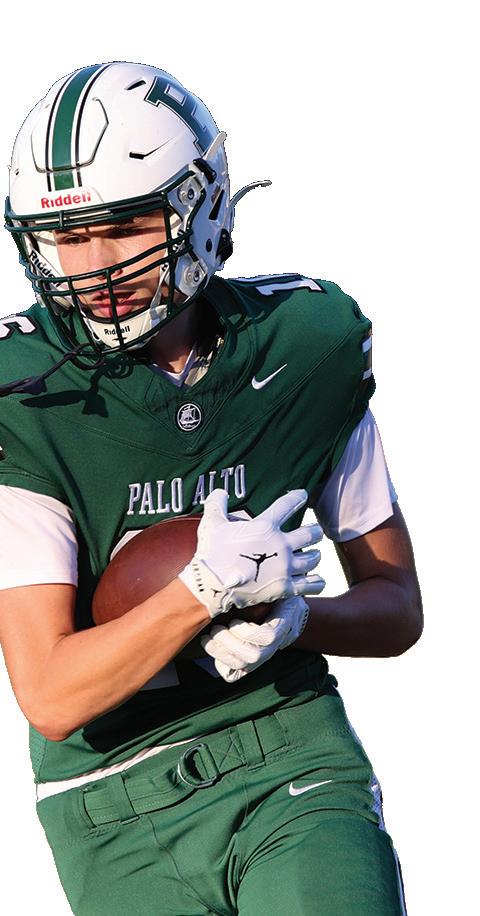
Photo by Lucas Tung


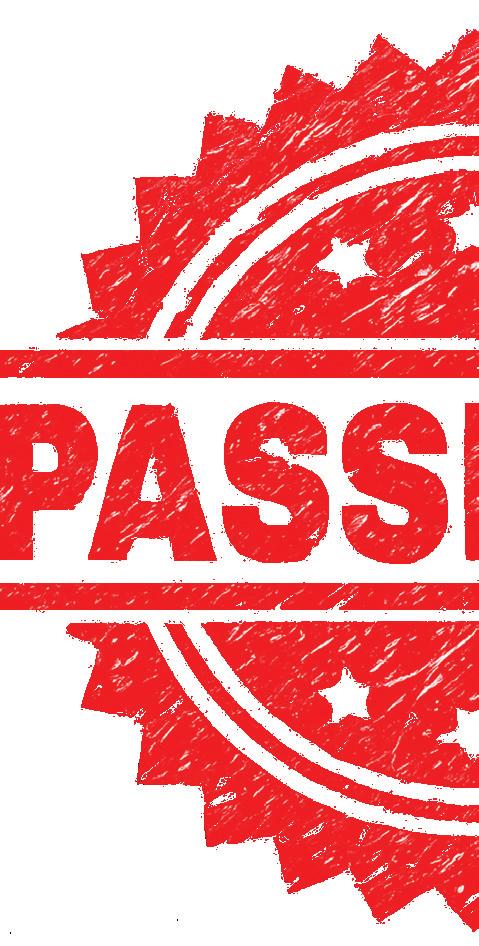

“When I was young, my family and I used to live in Sunnyvale,” Gerdemann said. “So when I decided that I wanted to spend a year overseas, my parents approached some of their old friends and asked if they would be willing to host me.”
All his life, Gerdemann has been interested in playing American football, however, the opportunities in Germany were limited.
“I was such a huge fan of American football, but could never play.” — Anton Gerdemann ‘27


“I was such a huge fan of American football, but could never play because there were no football clubs near me,” Gerdemann said. “When I learned that Paly had a no-cut football team, I thought I might as well try-out to become one of the reserve wide receivers.”
As a new member of the football team,


passion motivated him to work harder during practices, since he felt he was representing not just his teammates, but the entire Paly community.


While Gerdemann carved out his place on the football field, sophomore Emma Lodes has been navigating an entirely different path on the field hockey team. Originally from Vienna, Austria, Lodes moved to Palo Alto on account of her mom’s new job at Stanford University nearby. Unlike Gerdemann, Lodes’s move is permanent — making her adjustment long term.


Field hockey, which was already a part of Lodes’s identity back in Austria, was her introduction to Paly life. However, she quickly realized that sports culture manifests differently in America. Sports in Austria are tied to independent clubs, not schools. Games have less fanfare and sports don’t play a central role in a student’s life. At Paly, she felt the difference immediately, explaining that the excitement of her teammates and fans together creates a fresh sense of
“Everything feels more like a community,” Lodes
Lodes also enjoys the team-oriented approach to Paly. In Austria, teams are more centered on individual performance, contrasting with Paly’s focus on teamwork and camaraderie. At Paly, practices are not designed to showcase an individual’s talents, but rather they prioritize collective effort to grow and progress together. This focus helped Lodes adapt to American high school sports and reshape her idea of what success on the field looks


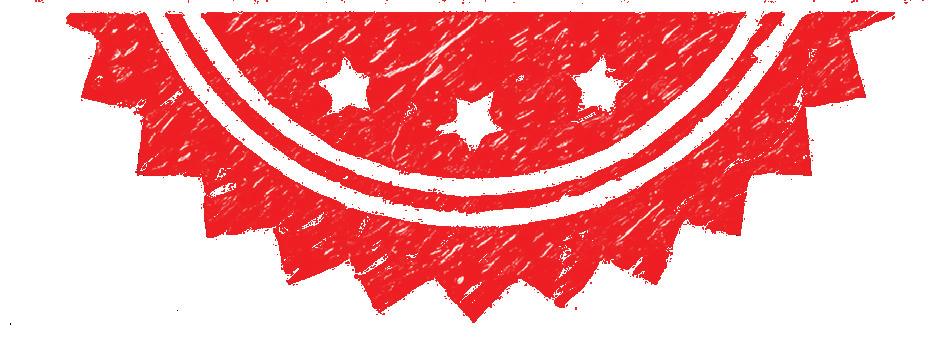
“In Austria, school felt more about just learning and studying, but here it feels like a community,” Lodes said. For Gerdemann, football seemed like an out of reach dream in Germany, while for Lodes, field hockey is a familiar sport reframed by a new culture. Although their journeys ran different paths, both have come to the same realization: at Paly, sports are not just games, they are doors to community, belonging and identity. Together, their stories highlight the unique gift that foreign students bring to Paly. For these students, Paly athletics are not only about winning or losing, they are about crossing cultures, creating friendships that reach across borders and showing how the spirit of teamwork extends
“Everything feels more like a community.” — Emma Lodes



been adjusting to the academic differences as well. In Austria, she would have had a rigid schedule of 13 required subjects, with very little room for discretion. At Paly, Lodes has the luxury of choosing courses to pursue specific interests.

academic culture between the two countries as well.




By LUKE JOACHIM and NATHAN LEE
The Vikings are taking on a new look in many sports and players take note of their new uniforms’ importance both on and off the field.


“I like this year’s jerseys better. I like this because it made it pop more.
When you wear a jersey that you think looks good it makes you play with more swagger and confidence.”

“This is my first year on the team, but I think that the jerseys look really cool and they feel super comfortable to play in.
I’ve seen some of the photos of the jerseys from last year and this year’s jerseys look way better.”
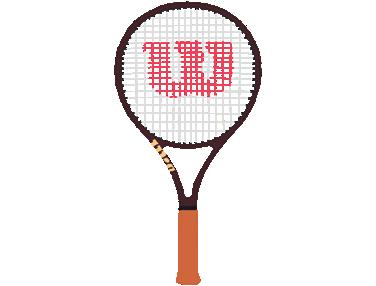
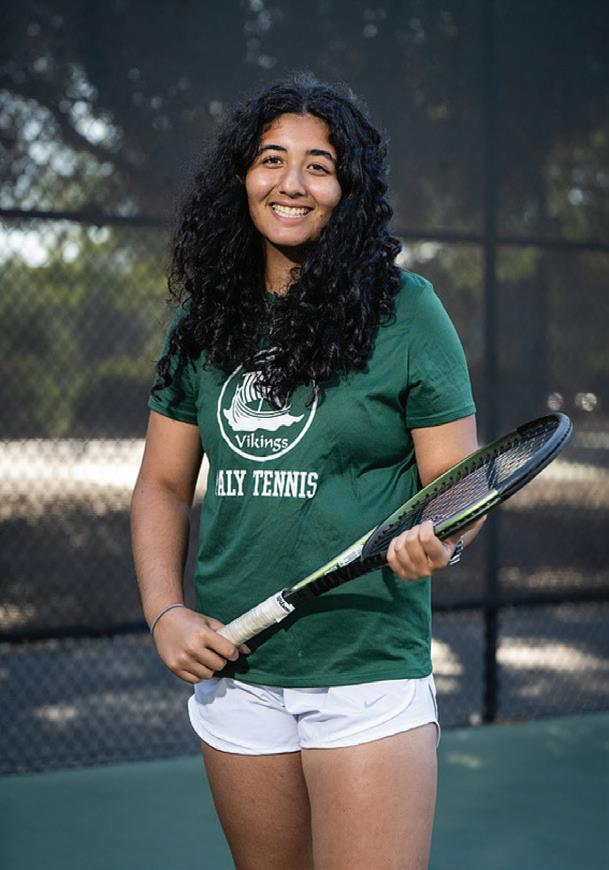


“The new jerseys are a lot better than the ones we had before because the old jerseys were technically practice jerseys, so they fit looser and were more annoying to play with.
The new jersey design is a lot cooler than the plain ones we had.”
“This year’s jerseys are so much better than last years. Last year we had to wear practice jerseys, and the shorts would rip and break.

The quality of the new jerseys are so much better than the old ones.”

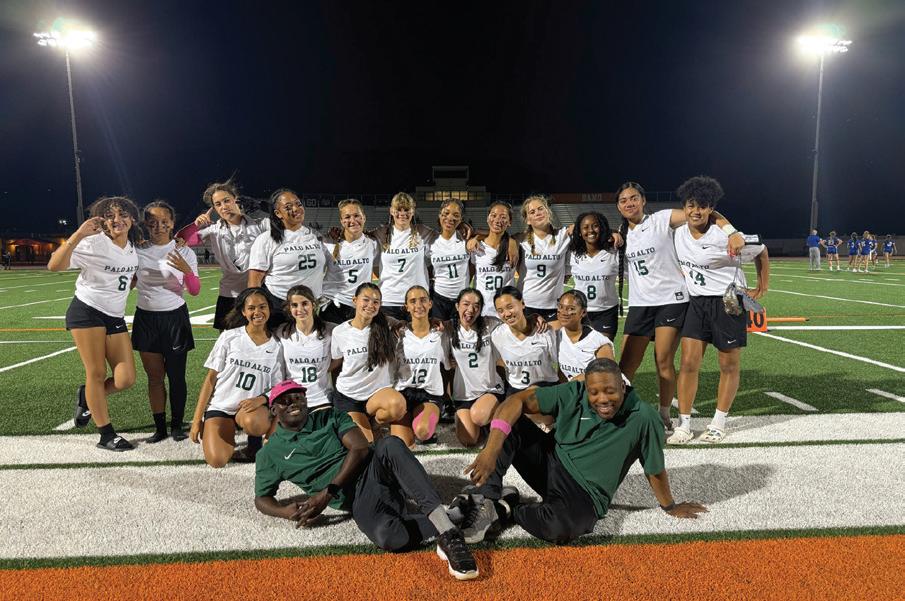
“I liked last year’s uniforms, but we had to change them since the suppliers stopped producing ones in that design.
I’m super thankful that the coach is ordering new white tank tops though, because those will look great!”
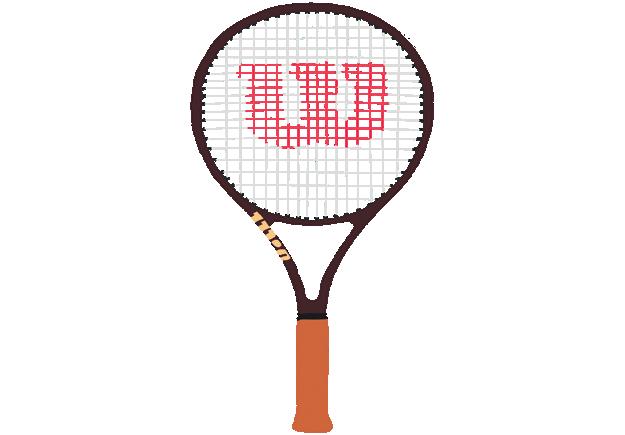
by NATALYA KAPOSHILIN, JAKE LIU and MICHAEL
WU


From high school fields to professional sports, packed schedules take a toll on athletes’ mental and physical health, highlighting the need for more rest, support and recovery.
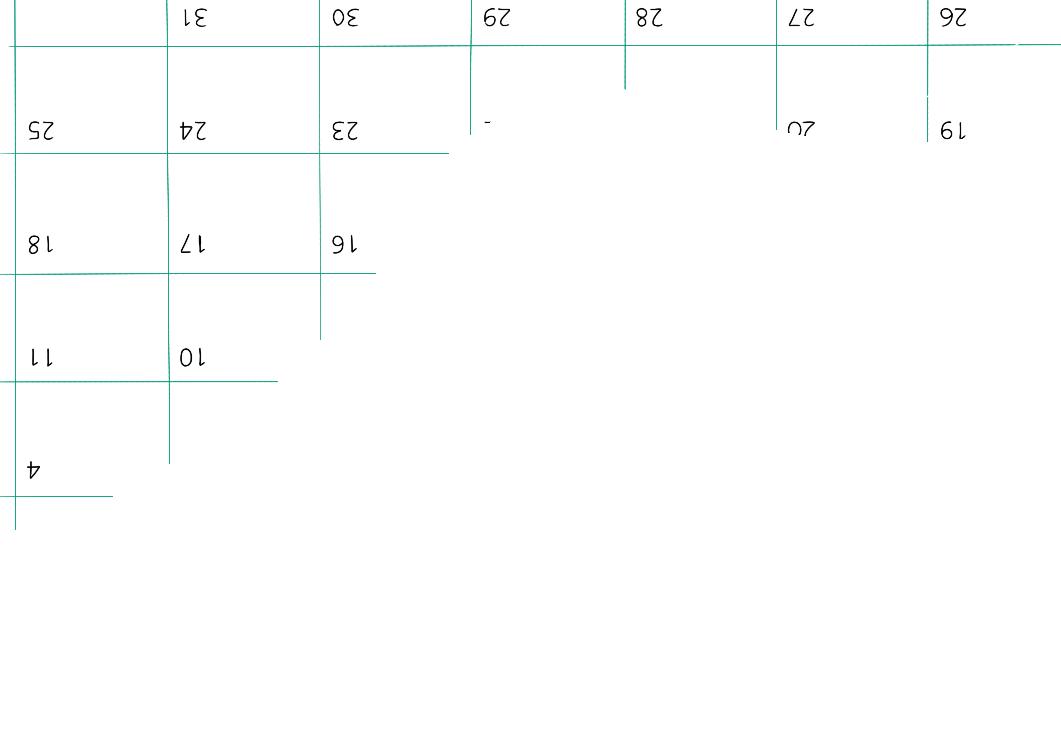
to keep up with. Later that season, they would eventually lose to the Ravens in the wild-card round. While it is easy to focus on player and coaching performances, scheduling in sports is an impactful factor that is often overlooked.

“Basketball is a demanding sport, and the schedule requires a lot of sacrifice.”
— Jeff LaMere
Depending on the sport, different sports teams will schedule their seasons in their own unique way. For example, the MLB requires each of the 30 teams to play 162 games each season. It is required that each team play each other at least once. Additionally, teams typically play one mid-week series and one weekend series per week. Given these requirements, the Sports Scheduling Group LLC
Lastly, the NBA requires each of its 30 teams to play 82 per season. Unlike both the MLB and the MLS, the NBA requires that each team play four games against each of the four other teams in its division, adding another layer of complexity for the NBA’s team of league executives to consider.
At Paly, the Athletics department leaves the scheduling to the SCVAL league, to which each respective Paly athletics team belongs.
“Coaches can choose who they would like to play for a non-league (non-SCVAL) game,” Paly’s athletic director, Scott Davis said. “Each sport has a limit on how many, and the coach can choose who they want to schedule.”
lombo schedules his games based on the priorities of the other coaches in the area.
“I schedule the Paly program baseball games at the beginning of June every year, and I use my coaches contact list to get games,” Colombo said. “When you have been coaching for 25 years, you get to know all the coaches and solid programs. We try to schedule at least three WCAL practice games a year to get the program ready for the SCVAL De Anza, which is the best public school league in the CCS.”
For Jeff LaMere, who coaches the Paly varsity boys basketball team, emphasizing the time commitment to his players gives them a clear understanding of what is required to play the sport.
“One of the biggest challenges—for both players and coaches—is the commitment required. Basketball is a demanding sport, and the schedule requires a lot of sacrifice,” LaMere said. “We play games over thanksgiving and winter Break, and for varsity players, also during the February break.”
Athletes who play a winter sport often

have games scheduled over break, forcing them to sacrifice time spent with family and friends, as well as time to relax their physical and mental spaces. Many athletes come into the sport knowing that they will have to sacrifice their winter break, and they find it part of the sport they play.
“Winter break basketball is one of my favorite times because you get really close with the team,” senior Jake Wang said. “Everyone stays home instead of going on vacation, and most of what you’re doing is playing basketball and hanging out with your teammates.”
While schedules are an issue for high school athletes, over packed schedules are an even bigger problem in the world of international soccer. In recent years, many have grown concerned over the world’s sports becoming increasingly artificial. This was exemplified in the most recent FIFA Club World Cup which was hosted in the United States in this past summer. Some teams had their last gameweek of the regular season just two weeks before the start of the tournament, which. While summer tournaments like the World Cup, Copa America and the Euros have existed, the introduction of this new format means that the best players are playing year round, almost every summer without a break. Such as fullback Achraf Hakimi, who had played over 225 games from the start of the 2021-2022 season to the start of this season for Paris Saint Germain and the Moroccan National Team.
This highlights a bigger problem in professional sports. A shift in focus away from the quality and wellbeing of athletes, and towards maximizing revenue and entertainment value. Professional athletes are being overworked and not given adequate time to rest and recover. A study by the CIES Football Observatory in 2021 found that the average player in the English Premier League covered 9.16 km (5.69 miles) per match. Due to the number of competitions the most elite athletes play in and with the number of matches in tournaments like the UEFA Champions League increasing dramatically, meaning that many athletes are often playing multiple matches a week. Similarly, The NBA
has 82 games in the regular season and is one of the most demanding professional sports leagues in the world. In the games that they play, the NBA players are expected to perform at the highest level with little to no rest days. In this year’s NBA playoffs, the schedule was packed tight, requiring extra effort, extra focus in addition to the travel and lack of rest. Sometimes it can also result in players getting on a plane after a game and having to play the following day.
“High school facilities aren’t the best but I try to do what I can to get my body right for the coming days.”
— Reed Hoffman (‘28)
Athletes sometimes struggle with mental health and may feel like they have too much to handle on their plates.

“I don’t really struggle with mental health wissues, but sometimes players on the tennis team may feel burnt out with all of the practices and matches, but I feel like we are very supportive of each other and are able to bring each other up,” Thomas Li said.
Unlike professionals, who have access to the best trainers, doctors, and recovery methods, high school athletes usually don’t have access to such high-end recovery facilities and physical trainers.
“As a wrestler, I sometimes find myself struggling to recover after a tough prac tice,” wrestling sopho more Reed Hoffman said. “High school facilities aren’t the best but I try to do what I can to get my body right for the com ing days.”
The MLB plays the most games
out of any professional sport, with 162 games in every season. The season lasts from late March to late September. MLB players only average one day off every two to three weeks, which results in numerous injuries across the league. About 400-500 players get hurt every year, and the league averages thousands of missed games due to injury. Injuries can range from mild strains to torn elbow ligaments. Many baseball players believe that the increased load of every season has resulted in shorter seasons, often caused by injuries.
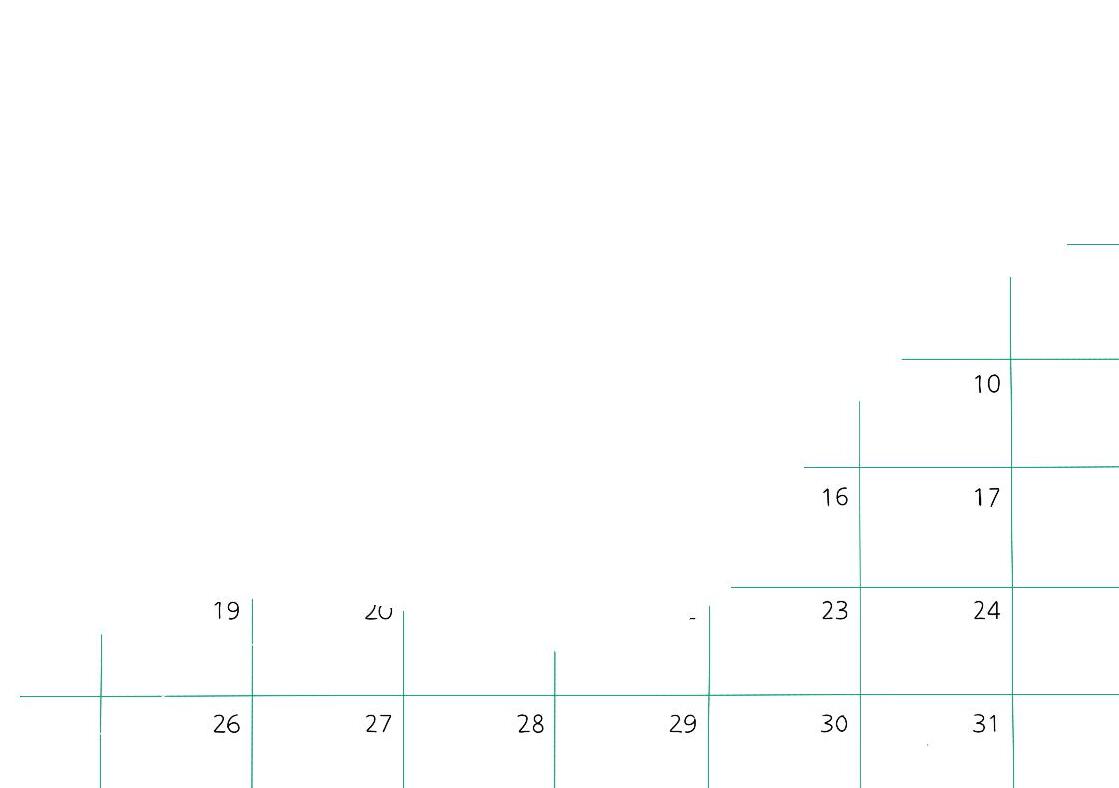
This experience also occurred to junior Willem Madwed, a former Palo Alto baseball player.
“From my own experience, this schedule led to true overwork, which showed up in the form of shin tendonitis,” Madwed said. Having loved baseball since I was four years old, it’s tough to watch my interest fade because of something out of my control.”
Some common injuries include shin

tendonitis, elbow, knee, and ligament injuries.
He experienced more difficulties during that season, which resulted in a tough predicament.
“As the season went on, I found myself stuck between wanting to play and needing time off to recover,” Madwed said. “As I wanted to balance playing and injury somehow, I relied on Ibuprofen before every practice, but eventually, even that stopped working after about a month, leaving me in a bad position.”
“Some people don’t experience these struggles of physical overwork during practices and games, it really just depends,” senior football player Kevin O’Brien said. “I haven’t personally been seriously injured from being overworked, but I have seen players around me get injured for sure.”
Thomas Li finds making time for schoolwork after a long day especially difficult. But, he is able to stay on top of his work which allows him to keep most of his energy on tennis.

“Staying

MLB teams have also complained about the lack of time they get to rest on travel days. Many teams finish games very late at night and have to get on the plane and travel across the country to play an early game.
Many athletes have to and must work hard to balance their time between school and athletics.
“I think absolutely as an athlete you are expecting a busy schedule,” Jake Wang said. “When you start taking AP classes and harder classes during junior year, that’s when it starts to get harder while still doing everything I can to be the best athlete that I can.”
Athletes at Paly spend a lot of time on the field, taking away from the time they have for schoolwork and other activities. Struggles with scheduling are common, and many find themselves lacking time to complete important assignments and study for big tests.
“As a baseball player at Paly, the time commitment on the field is a lot when comparing the work I get from the classroom. During the spring season, the team typically spends 15–17 hours a week between practices and games (personal estimate),” Madwed said. But not all players struggle with packed schedules, as some of that depends on the amount of physical overwork in practice and games.
on top of all the schoolwork is always my number one priority but I sometimes find myself too tired to do my work"
— Thomas Li (‘28)
As the packed schedules for many athletes continue to increase and they experience difficulties in their physical and mental health, this has become an issue that more people need to be aware of. In the future, high school and professional sports could make changes to provide resources to help athletes’ mental and physical health, as ultimately, athletes’ well-being is the top priority.
“Staying on top of all the schoolwork is always my number one priority but I sometimes find myself too tired to do my work,” Li said. “But, I always try to finish my homework and study on time, even if I’m losing my free time and missing parties.”






Brandon
has led them to to
some of the most impactful coaching styles.
By DYLAN ROBINSON and ANDREW KNAPP
When most people think about sports, the highlights are what come to mind first — the big games, last-second shots and championship runs. But behind every headline, there is a deep foundation built long before the buzzer-beater.
Few people stop and look beyond the big achievements to think about the work that happens behind the scenes. When taking a closer look, the components behind success almost always trace back to the coaches leading the charge, yet they are frequently overlooked.
When watching a game, the talented players and exciting highlights grab people’s attention. Most people see a team full of talented athletes without
thinking twice about how or why that tal ent shines. This is especially true at the high school level, where the coach’s role extends beyond play. They define the culture, build a strong team foundation and set the tone for both athletic and personal growth—yet they rarely get their moment in the spotlight.

potential than they think.
“It’s about challenging ourselves, right?” Davidson said. “It’s about asking yourself, am I going to be better today than I was yesterday?”
Looking deeper into each coach’s journey and their unique approach to leading reveals just how much their background shapes the way they coach. Their stories show how coaching isn’t just a job, but a passion developed over the years.
Paly’s current cross-country coach, Michael Davidson, didn’t fall into his role by accident. His path was defined by a single mindset: improvement, one day at a time. He started coaching at Paly in 2016, believing that his mindset could get athletes to understand that they have more
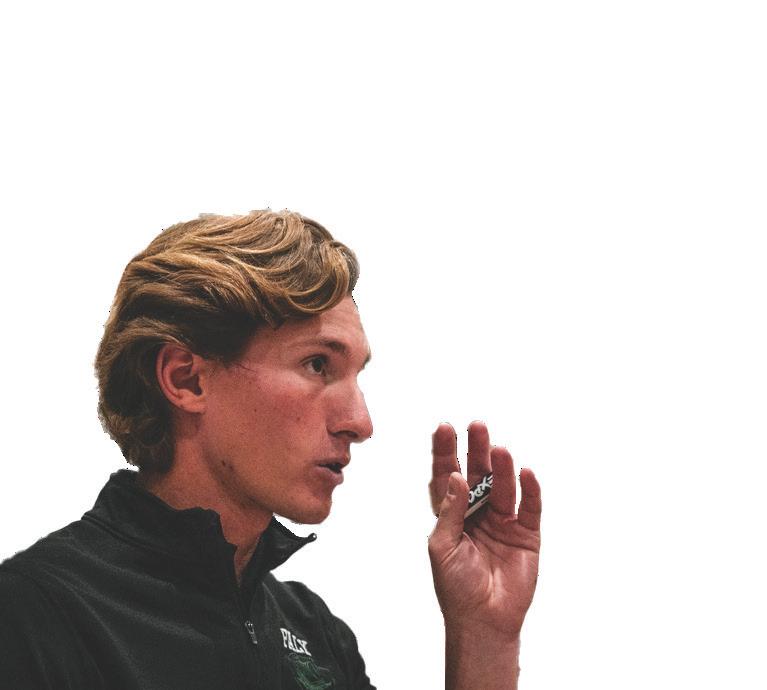
Photo by Tyler Wong
Davidson’s upbringing has shaped how he coaches and how he offers insight to help his athletes succeed in life. Davidson started competing on his own when he was 8 years old and claims that his first-hand experience influences how he coaches. His goal isn’t just to help athletes become faster; it’s about improving both their physical and mental skills so they can push themselves to become better athletes and people.
The results speak for themselves. Recently graduated senior Tristan Kippes placed in the top 10 for five cross-country races under the coaching of Davidson.
— Brandon Byer ”
Relationship building is one of the core philosophical tenets that drives who I am. Players know that while I will demand an incredible amount, I do so because each athlete’s role is valuable, meaningful and impactful.
“It was a different feeling than the other races, but luckily, I still had the unwavering support of my coaches,” Kippes said.
This kind of support from coaches is what pushed Kippes and many others to achieve what they may have thought was not possible. They were able to reach their full potential and carry it over to things outside of the sports world. Coach Davidson often reminds his athletes that no matter their age, the sky’s the limit
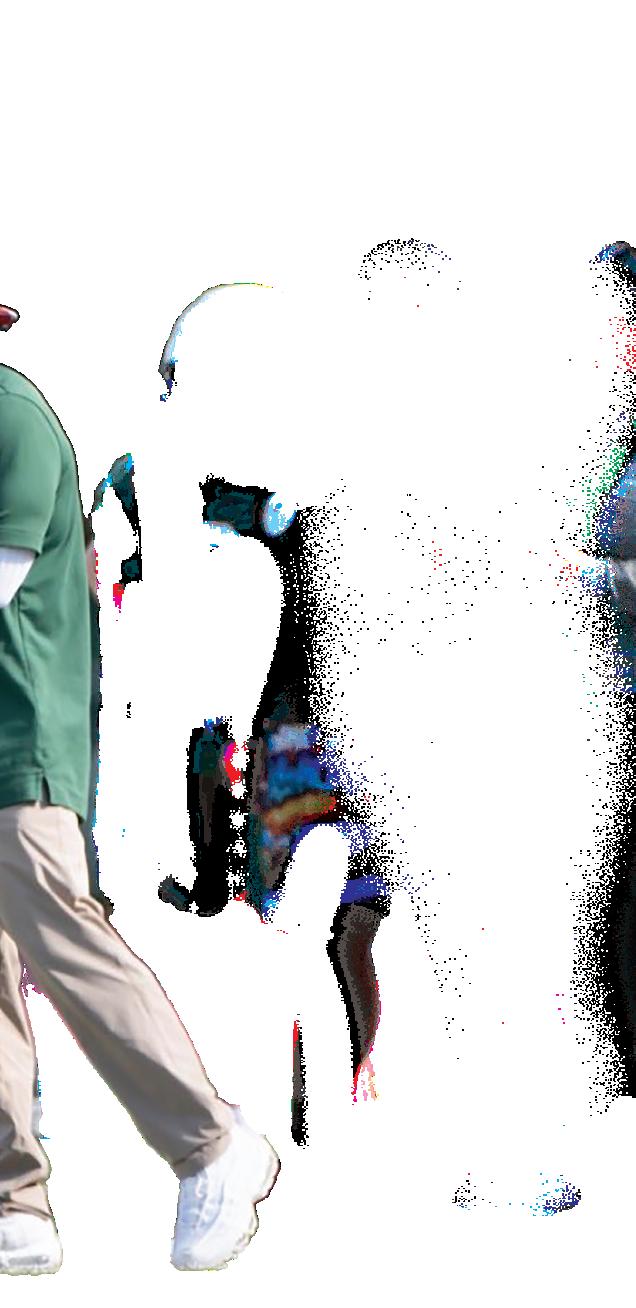
if 100% effort is given. He “knows what it takes” for students to reach peak ability and believes there are no restrictions to what his runners can achieve if they com-
For some Paly coaches, their path began right here on campus. Brandon Byer attended Paly between 2009 and 2013, resultantly knowing the school first-hand. After graduating from University of Missouri, Byer initially returned to become the head coach of the boys freshman basketball team and is now the head coach of the boys junior varsity team.
Byer’s love for coaching began in his childhood. Growing up, his dad coached him in both his Palo Alto Little League and National Junior Basketball teams, allowing him to experience the impact that coaching can have on young
“While I did not realize at the time that I wanted to coach, when I got to college, I was able to see the impact that coaching could have on young people by being coached myself,” Byer said.
The turning point came in 2015, when he became a student manager for the University of Missouri’s men’s basketball team.
“Getting a behind-the-scenes view of how a Division I program operated, working under two different head coaches, enabled me to adopt ideas, concepts and ideologies for running a program that I’ve directly applied here at Paly,” Byer said.
For him, coaching is about more than just wins and losses, but about developing the chemistry and trust between players and coaches.
“What I value most about coaching a team is trust,” Byer said. “When a coach is able to trust their players and know what they’re getting from them on a daily basis, whether at practice or games, coaching becomes that much easier. Trust takes time to cultivate. Hence, patience is also critical too.”
He also emphasizes the importance of building relationships within athletics above all.
“Our student-athletes know that it’s greater than basketball with me,” Byer said. “Relationship building is one of the core philosophical tenets that drives who I am. Players know that while I will demand an incredible amount, I do so because each athlete’s role is valuable, meaningful and impactful.”
It’s that balance, demanding excellence but valuing relationships, that makes him
come back to Paly each year. The school’s athletic culture that he has been a part of for so long keeps him motivated and always wanting more.
“What makes me want to come back and coach at Paly year after year is the athletic prowess this school has maintained over decades and a culture of winning,” Byer said. “For me, I really want to ensure that our student-athletes both develop their skills while also win and experiencing success.”
Paly PE Teacher and JV football coach Jason Fung has his own unique journey shaped by his upbringing, mentors and learned philosophy on athletics. After coaching track and football for roughly 20 years at Paly, Fung has crafted a superb coaching style deeply rooted in his childhood teachings and values.
“It started from expectations from my own parents, following the rules with consequences,” Fung said. “How I coach is there’s expectations and when you miss expectations there’s consequences.”
Fung’s ability to hold his student-athletes accountable to a certain standard has made him one of the most well-respected coaches to come through Paly sports. Amidst his style of coaching, Fung continues to dedicate himself to coaching to see the success that the kids produce.
next generation. Coaches like Davidson and Fung push athletes to be their best and find their limits. Coaches like Byer instill trust and relationships that last beyond high school. Each brings something unique to the teams they lead and their work should not go unnoticed. What makes Paly athletics special isn’t just the trophies or the history of winning, it’s the coaches who carry that tradition forward. They’re the ones who believe in their players even when the scoreboard doesn’t. They’re the ones who demand the best, not because they care about glory, but because they care about the growth of their athletes. The next time you’re at a game, take a second to think about the people watching from the sidelines and guiding the team behind the scenes, because without them Paly sports wouldn’t be any-
It’s about asking yourself, am I going to be better today than I was yesterday?
— Michael Davidson
“You get the gratification from the kids being successful on the field and from the kids doing well in the class room. It’s that whole piece of watching these kids grow in what they do that’s the reward,” Fung said.
Many underestimate the road to be coming a high school coach. To some, it may look simple. Show up at practice, call some plays and support from the sidelines. But the reality of coaching is far from that. The journey to coaching at Paly is full of personal stories, setbacks and lessons that evolve into the lessons these coaches use to help their athletes.
When you zoom out, the story of Paly athletics isn’t just about its athletes. It’s also about those on the sidelines who have dedicated their lives to shaping the


By IAN CIERNIAK, ELIF DOGAN, and AMANDA GOODY

Music serves many purposes in the sports world, fueling competitive spirits, setting mindsets and amplifying emotions. We asked Paly athletes to share the importance of pregame music, what songs they listen to before games and why.

“I listen to music before games to focus and get myself hyped. I like WENT WEST because it has a good beat drop and it makes me more excited and energetic.”
“I listen to music before games so I can lock in and get my head in the game. I like Foolish and 4th & Goal because their songs that I listen to often.”

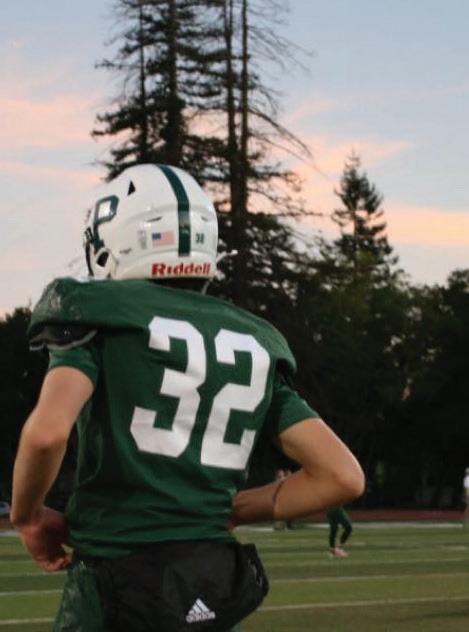
“ I listen to music before a game to change my mindset. ‘Transportin’ is fast-paced and upbeat it helps get my energy up and allows me to focus on it instead of the stress I’m feeling before a game the song gets me excited to go play football and compete.”

“I like to listen to Hot Now and Young Boy in general because he’s a very hyper and aggressive artist which is what I want my mentality to be going to the game. I want to be excited, aggressive and at times a little mad.”












BY GREG GOODY
The NFL preseason is a necessity; players need to ramp up gradually to play football at the highest level. By hosting preseason exhibition matches, the NFL can put their best product on the field during the real season.
Back in 2022, Cincinnati Bengals Rookie
Wideout Ja’Marr Chase struggled heavily with dropping passes in preseason.
Clips from Bengals training camp circulated, showing Chase dropping routine passes. It was even worse in the preseason games; Chase recorded four drops on five targets. These struggles were magnified by the media, with some analysts questioning whether Chase had lost confidence or if the transition from college to the NFL was proving too steep.
The spotlight on high draft picks can be relentless, especially when they falter early, even in games that don’t count in the standings. Fans were concerned Chase would be a “bust” and the Bengals wasted a first round pick on a receiver who couldn’t catch the ball.
These concerns were quickly put to rest once the regular season began, as Chase exploded on the scene with 81 receptions for 1,455 yards, and tacked on 13 touchdowns to bring home AP Offensive Rookie Of the Year.
Rookies need time to acclimate to the pressure of be

picks panning out. The pressure of transitioning from college football, where everyone knows you are a superstar, to going to the NFL and having to prove yourself all over again, but this time against professional athletes instead of collegiate level athletes, can be too much to handle for many rookies. Preseason games are the perfect op portunity for these players to accli mate to their new environments.
Preseason games are also a chance for coaches to evaluate how well a rookie fits within the team’s system— something that isn’t always visible in practices alone.
ing a real game?
My final reason for the NFL needing pre season is the opportunity for unknown players to show off their skills. Take Victor Cruz for example, who went undrafted in the 2010 NFL draft, and signed with the New York Giants. Cruz exploded onto the scene in the 2010 preseason, specif
free agent
Victor Cruz exploded onto the scene in 2010, when he recorded six catches for 145 yards and three touchdowns in a preseason game.
Timing, chemistry, and real-time decision-making are all tested in a way that no drill or scrim mage can fully replicate.
Chase is now considered the best re ceiver in football. This is just one exam ple of why the preseason is needed in the NFL— rookies need time to get up to speed with the NFL, and what better way to do that then get reps in game?

Another reason preseason games are necessary is for players to get in shape for the season. Players work all off-season to get in shape for football season, however, just because they are physically fit does not mean they are in “football shape.” In an interview with the Boston College publication, the #FORBOSTON files, current Philadelphia Eagles and former Boston College Eagles running back A.J. Dillon stated that getting into football shape means gradually ramping up through padded practices, and eventually practicing real game scenarios to prepare for games. What better way to practice real game scenarios than play-
can be made that the risk of injury in football is too high for teams to afford playing in “meaningless” games, they are far from meaningless — offering rookies experience, helping players get into game shape and creating chances to stand out. . Additionally, for teams who don’t want to risk injuring their star players, they don’t have to play them in the preseason.
Preseason tickets are always cheaper than regular tickets, giving fans a cheaper option to watch their favorite teams. Plus, many fans enjoy watching their team’s first round draft pick in uni form for the first time ever, especially if they end up being really good.
While player safety should be the num ber one priority in the NFL, it is extremely important that preseason remains a part of the league. It is essential for the NFL that their players are ready to go for the season, as it is good for business when the players are performing at their high est level.


BY MABEL McCARTER
The NFL is far too dangerous to afford to have preseason exhibition matches; while star players are often sidelined and the games barely generate a profit, it might be the perfect time for the NFL to switch things up.
J.J. McCarthy, Quentin Johnston, Marquise
Brown, Teddy Bridgewater and Rondale Moore are only some of the many athletes who have experienced injuries that have derailed their NFL careers. The NFL preseason presents meaningless, low-quality games that pose a risk to the athletes.
The NFL preseason provides only a fraction of the viewership compared to season games— preseason games have an average of 2.2 million viewers, while the regular season racks up a large audience of 17.2 million fans. Given the risks to players as well as the lack of competitive value and public interest, it is clear that there should no longer be NFL preseason games.
This means there are more injuries in the span of three weeks of preseason compared to the entire NFL regular season. Many of these athletes are pushing their bodies beyond their limits to prove themselves and secure a spot on the roster; this makes them extremely prone to injuries.

Preseason games are notoriously known for being both sloppy and uncompetitive. First string players either only play a couple snaps or never see the field at all, leaving the fans watching second and third string players who are unfamiliar and inexperienced, resulting in terrible quality games. Rather than building excitement for the upcoming season, these low-enthusiasm exhibition games diminish fan experience and player safety.
Countless NFL athletes have fallen victim to the dangers that preseason games bring. According to the National Library of Medicine, 53% of all injuries between 2016 to 2021 occurred during the NFL preseason.
The cost of this is simply way too high.
Promising talents like J.J. McCarthy and NFL veterans such as Teddy Bridgewater suffered major setbacks during games that essentially don’t matter. These injuries ultimately cause the league to suffer more than succeed.
McCarthy showed promising talent as he led Michigan to winning the 2023 college football national championship. He was the 10th overall pick in the NFL draft and was selected by the Minnesota Vikings. McCarthy was building up his momentum for what was supposed to be a promising rookie season yet, a hit in a preseason game tore his meniscus and sidelined him for the rest of the season. This not only halted his advancement but also his ability to build team chemistry and develop as a quarterback. This has deteriorated his game, as he went from being national championship winner to a quarterback who has shown significant struggle during his first two games, even after recovering. This was a heart breaking injury for both McCarthy and fans because someone with so much promise was
unable to prove himself as a player because of a preseason game.
Unlike the NFL, college football has no preseason, relying instead on practices and scrimmages. This approach eliminates the need for preseason games, prepares both new recruits and veterans, and greatly reduces injury risk before the season.
If college level athletes are able to handle the transition into the season without preseason games, then professional athletes should too, protecting both their health and careers from unnecessary risk.
Some may argue that the preseason provides coaches and players the chance to evaluate players, especially young new players, in a game setting. However, these games aren’t worth the risk, especially when you can evaluate these players in safer game like settings such as controlled scrimmages and practices. Additionally, preseason games don’t perfectly replicate regular season games; they are lower quality. This is simply not necessary considering the negative effects it causes.
Overall, the NFL preseason causes more harm than good. These games lack competitive value, fail to capture fan interest, and put athletes at risk for unnecessarily career-altering injuries. Promising athletes like J.J. McCarthy and Teddy Bridgewater, and so many others, have paid the price of preseason games that hold no real value in the league. College athletes are able to succeed without preseason games, so there is no reason why the NFL cannot adopt the same system. It is time that the NFL realizes that the risks of the preseason outweigh the rewards; they need to end the preseason to protect both the players and the integrity of the game, as well as please and preserve the excitement of the fans.


